Take Me to the Recipes
The Central African Republic (CAR) conjures images of vast savannas teeming with wildlife, dense rainforests echoing with unseen creatures, and the mighty Ubangi River carving its path through the heart of the country. But beyond the breathtaking landscapes lies another captivating story waiting to be told: Central African Republic Food, a story whispered in the sizzle of spices, simmered in stews rich with tradition, and bursting forth in the vibrant flavors of its unique cuisine.
CAR’s cuisine is a fascinating tapestry woven from the threads of history, geography, and climate. Ancient trade routes brought whispers of flavors from neighboring countries, while French colonial influences left their mark on cooking techniques and ingredients.
So, join us on a delicious adventure as we delve into the heart of the Central African Republic’s cuisine. We’ll explore how history, geography, and climate have shaped its flavors, and discover the unique dishes that will tantalize your taste buds and transport you to the heart of Africa. Buckle up, food lovers, because we’re about to embark on a culinary journey like no other!
Take Me to the Recipes
Takeaways from a Culinary Journey Through the Central African Republic:
A Land of Diverse Landscapes
From sprawling savannas to dense rainforests and the mighty Ubangi River, CAR’s geography shapes its cuisine with a variety of available ingredients.
Echoes of History
Trade routes and French colonial influence have left their mark on flavors and cooking techniques, creating a unique culinary tapestry.
Nomadic and Settled Traditions
The cuisine reflects the practices of both nomadic herders and settled farmers, each contributing distinctive elements.
Climate’s Culinary Influence
The scorching heat and humidity dictate cooking methods and the availability of seasonal ingredients.
Spice Symphony
Spices play a vital role, adding depth and complexity to dishes, influenced by neighboring countries.
Staple Powerhouses
Cassava, sorghum, and millet form the base of many dishes, providing essential carbohydrates.
Protein Power
Meat from livestock like goats and sheep is a staple, alongside fish from the Ubangi River and bushmeat (in some regions).
Seasonal Specialties
Dishes change with the seasons, featuring fresh produce during rainy periods and more preserved foods during dry seasons.
Beyond Food: A Cultural Experience
Meals are a time for community, shared with loved ones and fostering a sense of togetherness.
A Culinary Adventure Awaits
CAR offers a unique and delicious cuisine waiting to be explored, a testament to its rich heritage and vibrant culture.
Where is the Centra African Republic?

The Central African Republic (CAR), formerly known as Ubangi-Shari, is a landlocked country in Central Africa. It is bordered by Chad to the north, Sudan to the northeast, South Sudan to the east, the Democratic Republic of the Congo to the south, the Republic of the Congo to the southwest, and Cameroon to the west.
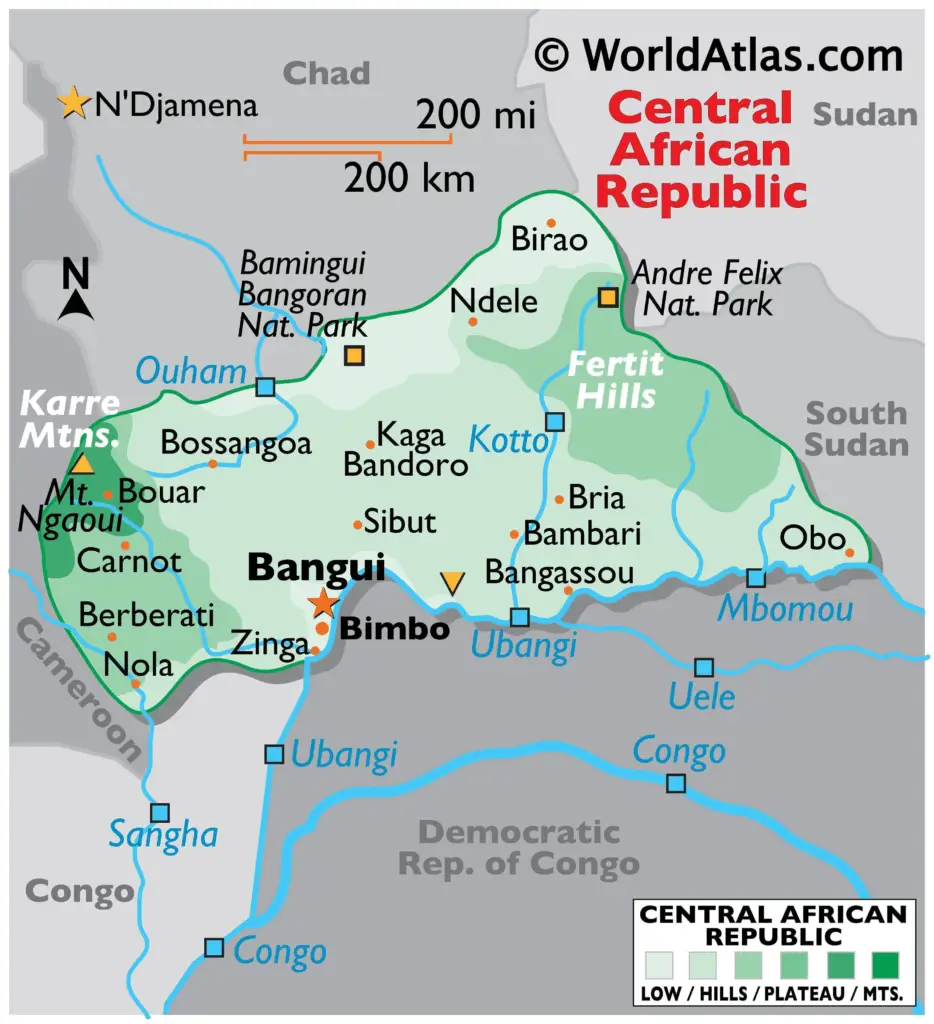
Index to the Contents
- Take Me to the Recipes
- More articles
- 10 Interesting Facts about the Central African Republic
- Central African Republic ’s History and the Effect It Has Had on the Cuisine
- How the Central African Republic Climate and Geography has Influenced the Cuisine
- Understanding the Essence of the Central African Republic’s Cuisine
- Exploring Central African Republic ’s Ingredients: The Flavors of Central African Republic ’s Cuisine
- The Central African Republic ’s National Food
- Exploring the Central African Republic’s Street Food
- The Most Popular Central African Republic Recipes
- How Healthy is Central African Republic’s Food
- The Central African Republic ’s Cuisine Recipes to Try at Home
- Conclusion
- FAQ’s
More Articles for Your Pleasure
- North and South American Cuisine – A Culinary Expedition
- European Cuisine: Savor the Continent’s Best Culinary Secrets!
- African Cuisine: Discover the Bold Flavors & Global Charm!
- Asian Cuisine Unlock its Secrets – Taste, Health & Global Influence!
- Oceania Cooking: A Culinary Journey Through the Pacific
- Caribbean Cuisine: Beyond Jerk Chicken
- Middle Eastern Food: A Flavor Journey
Savor iconic the Central African Republic’s Dishes – Click on each tantalizing picture to open up the Recipe

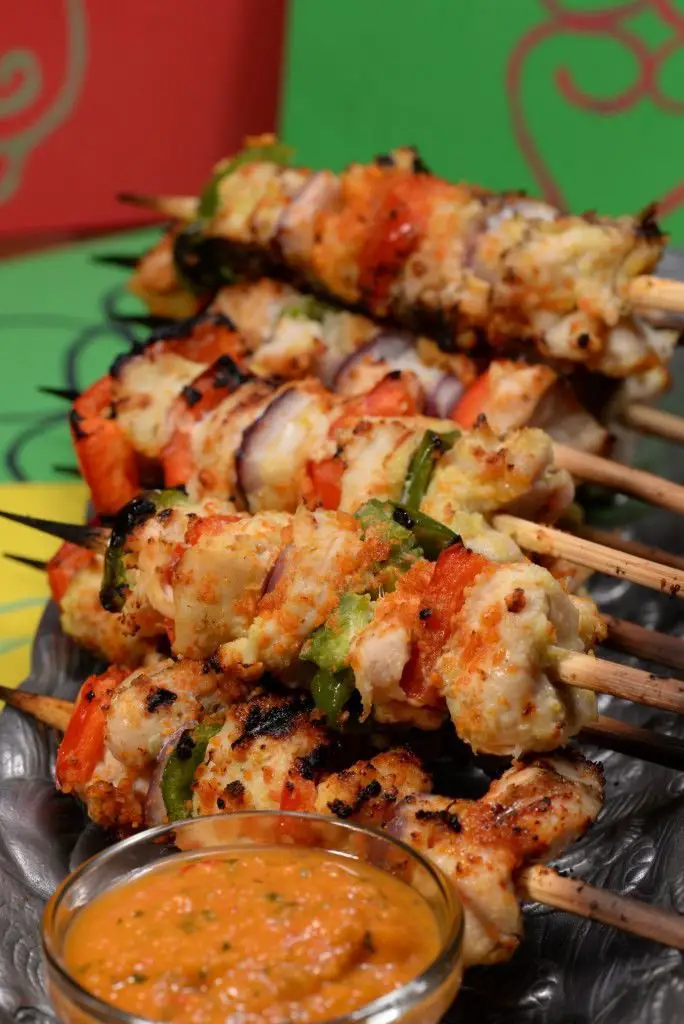
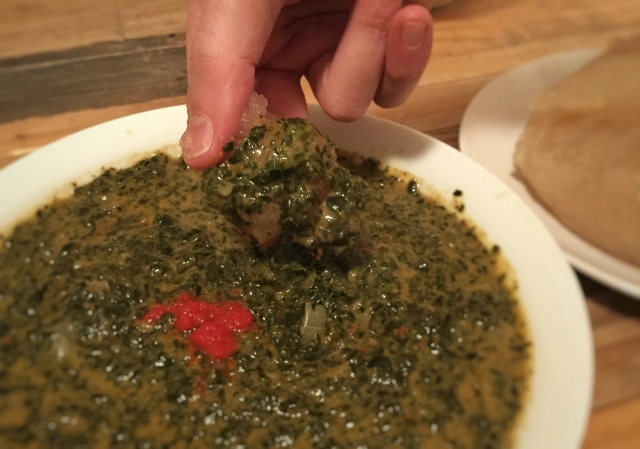

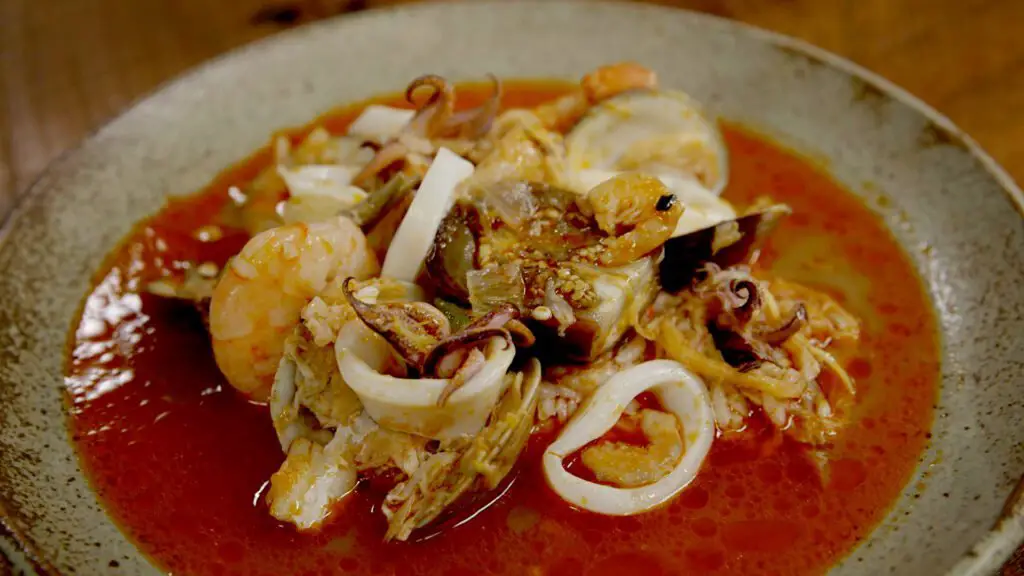
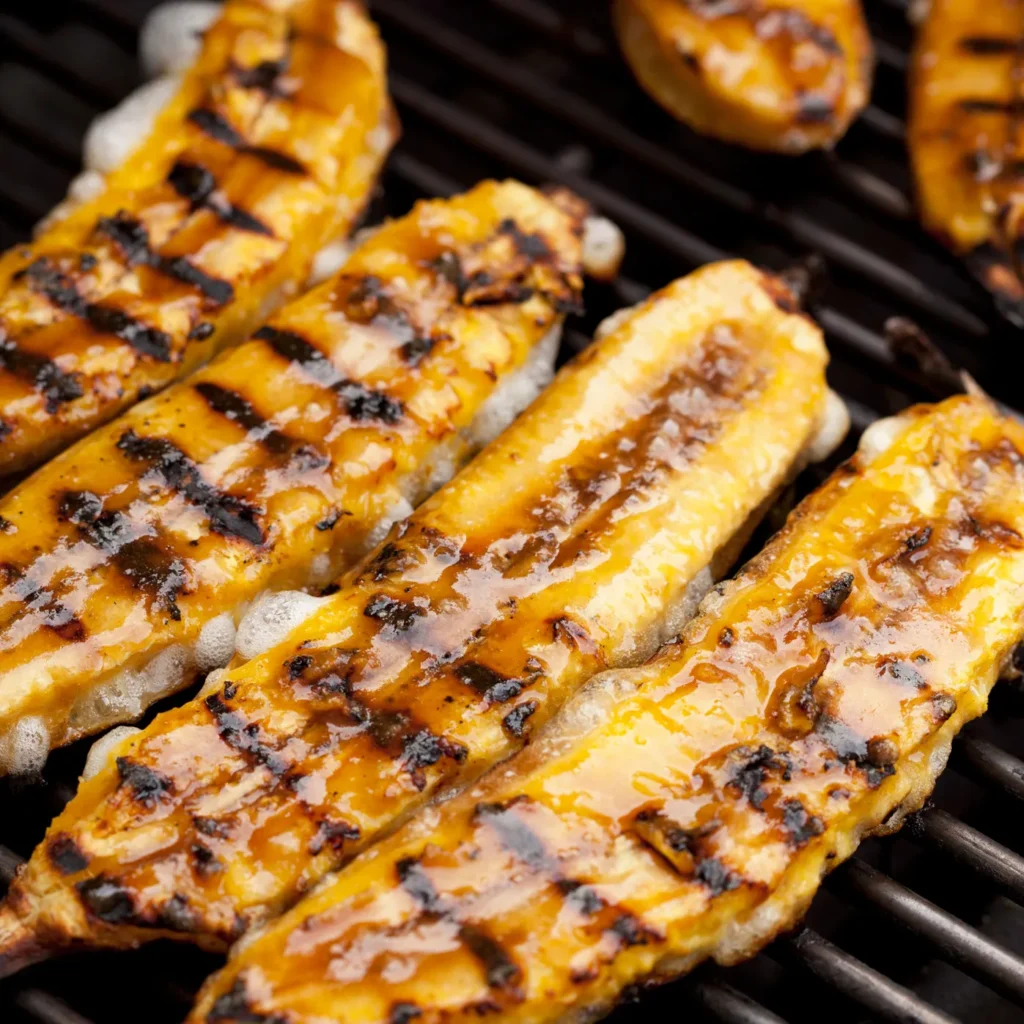
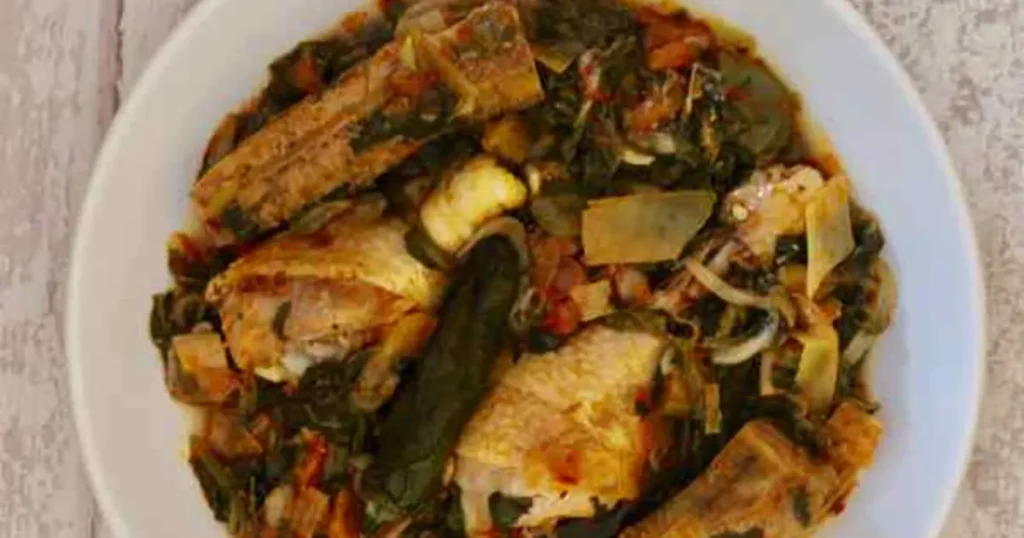
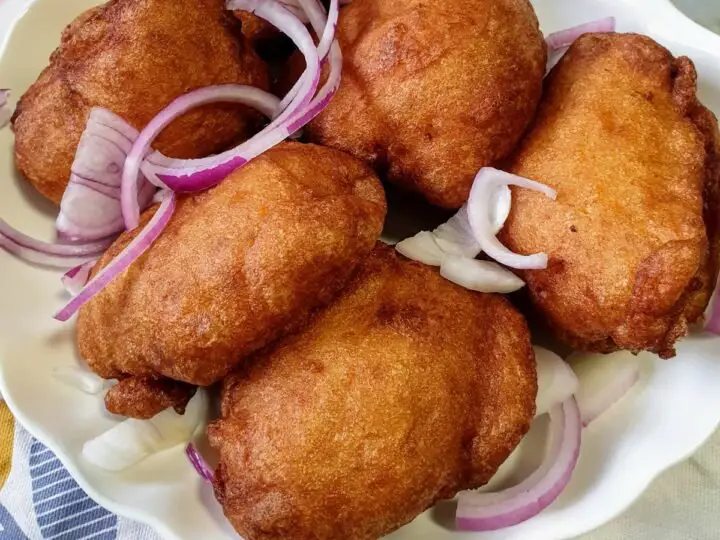
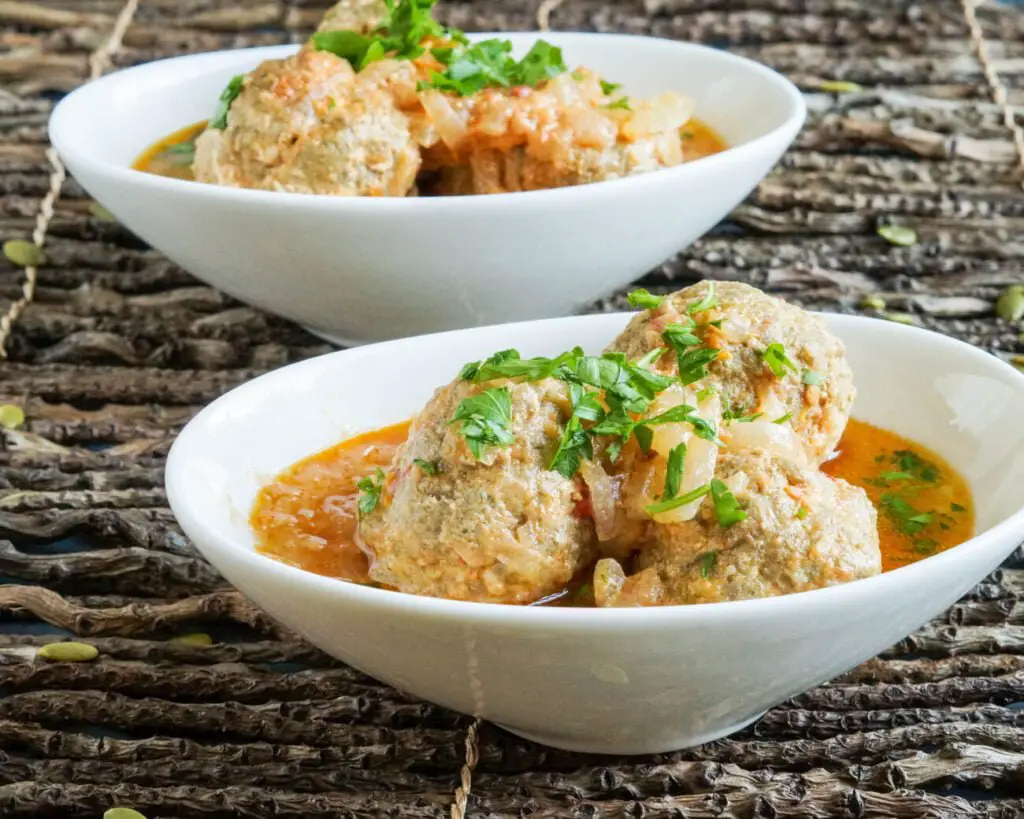
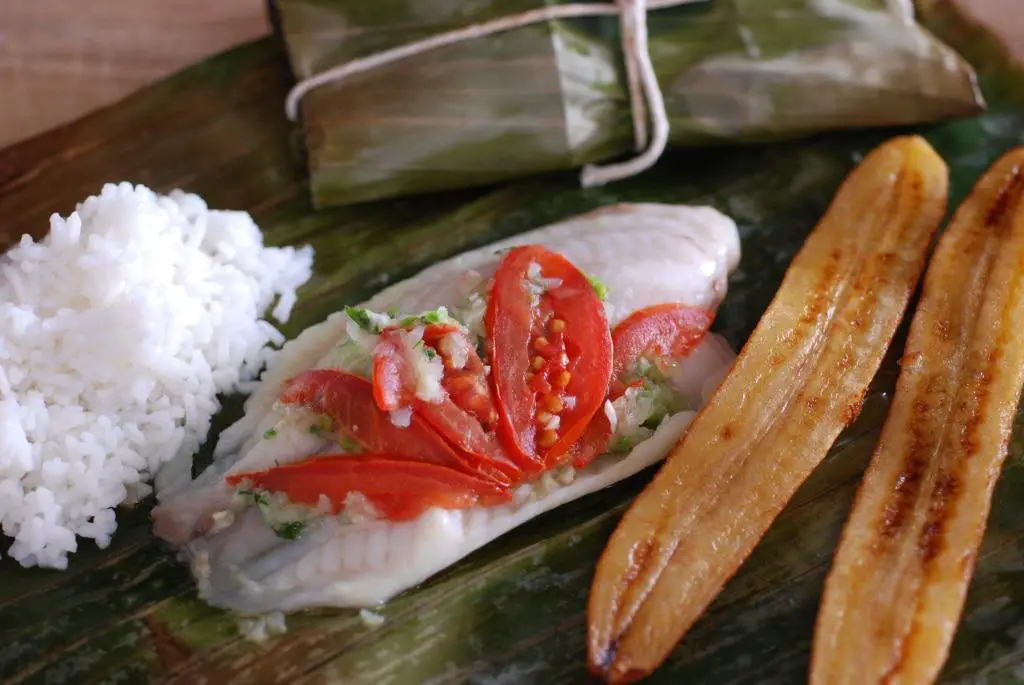

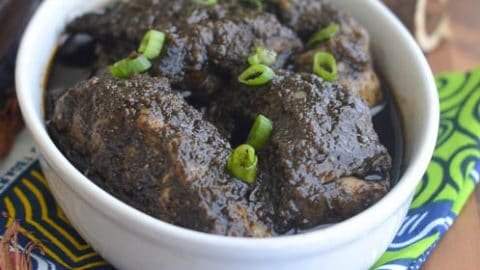
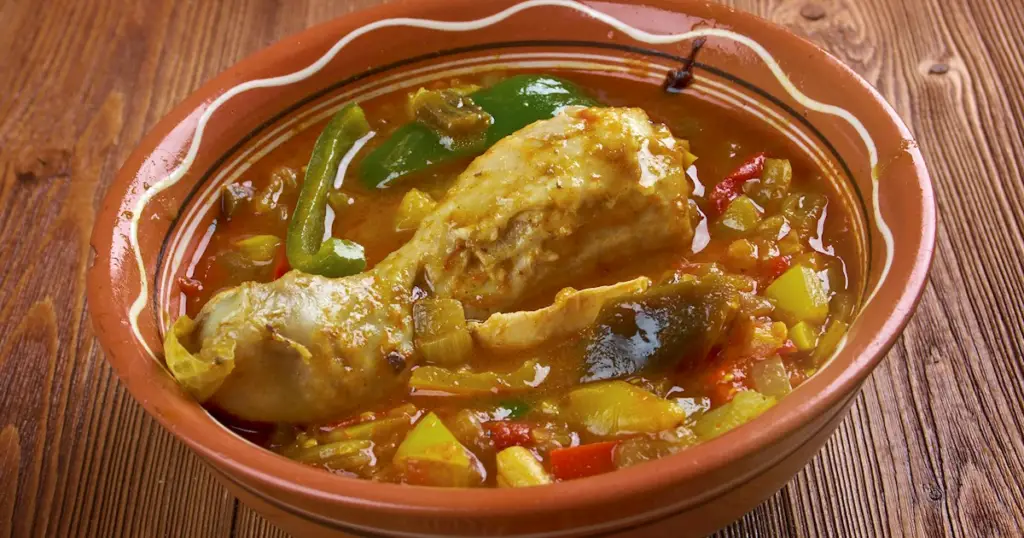
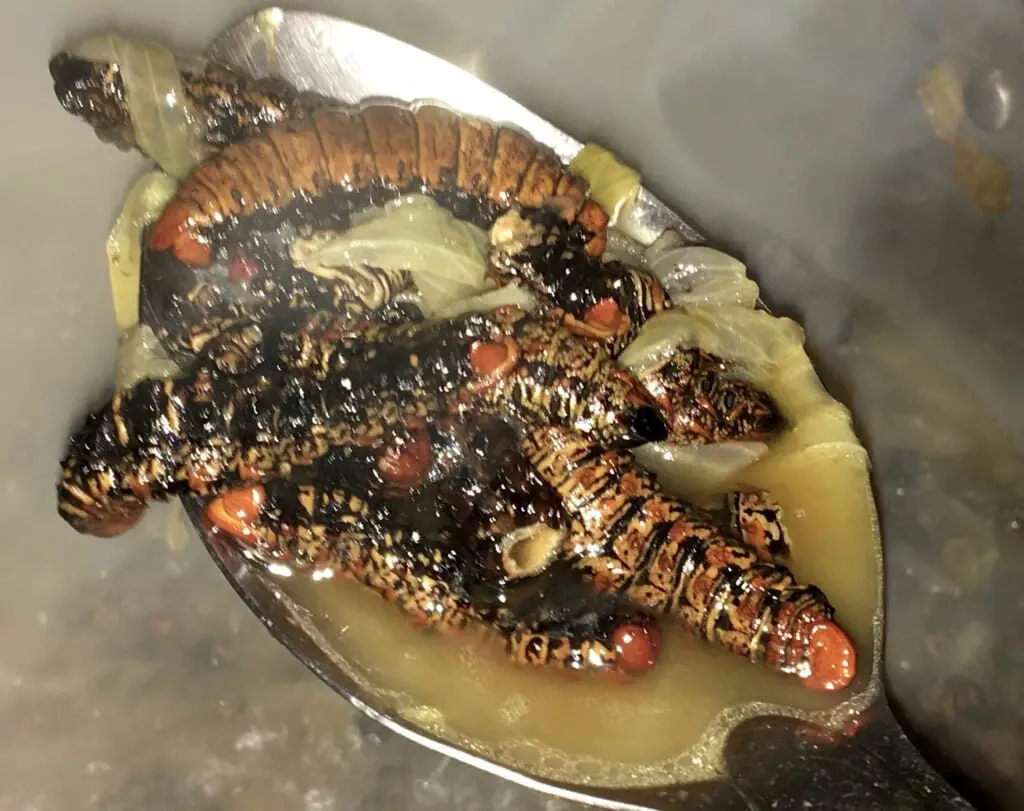

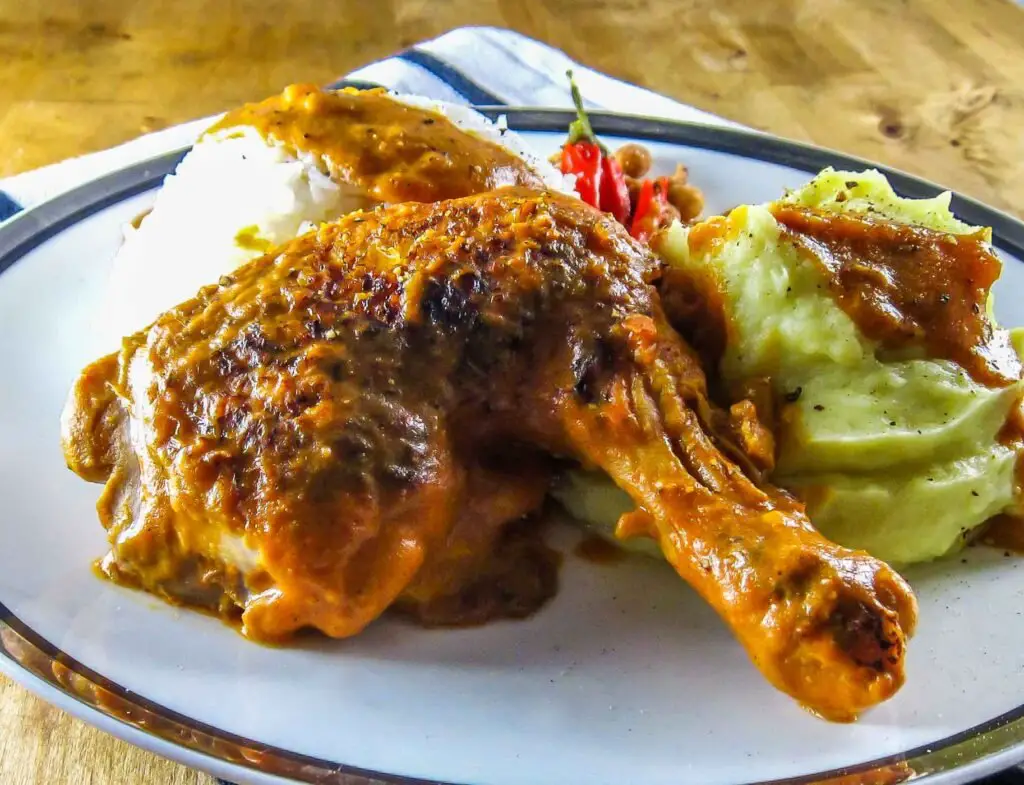
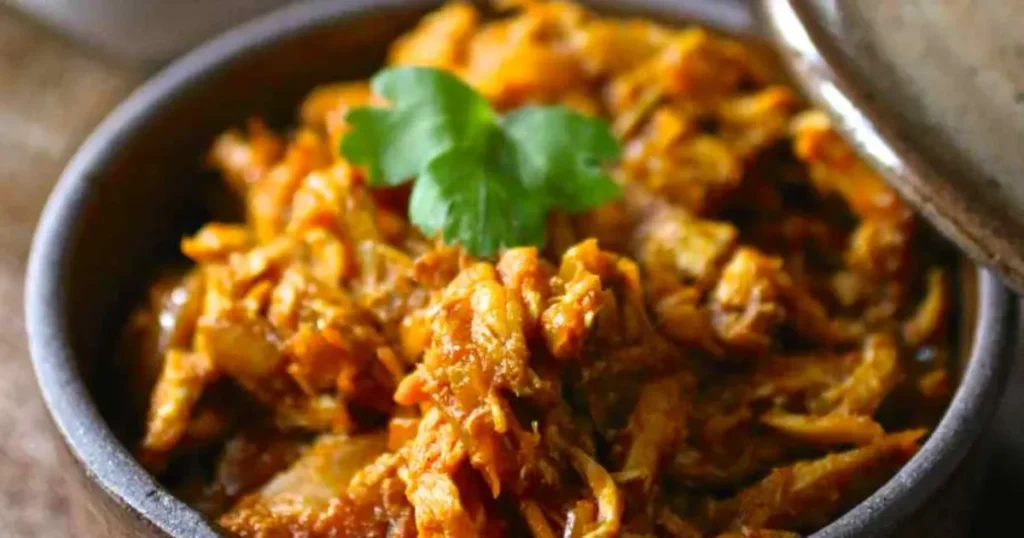
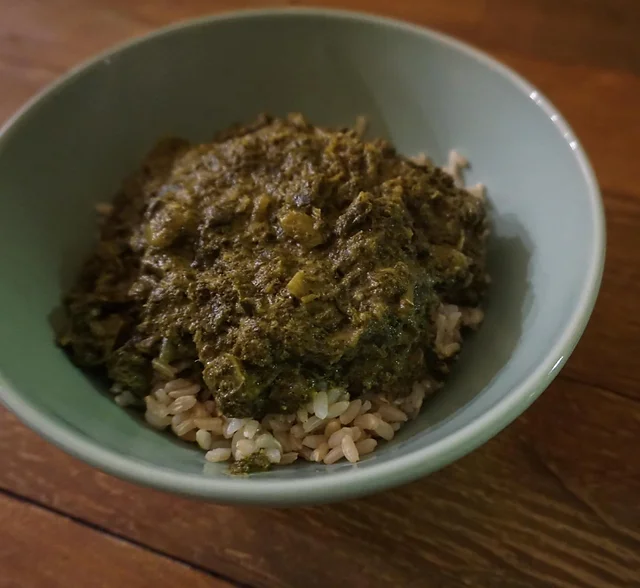
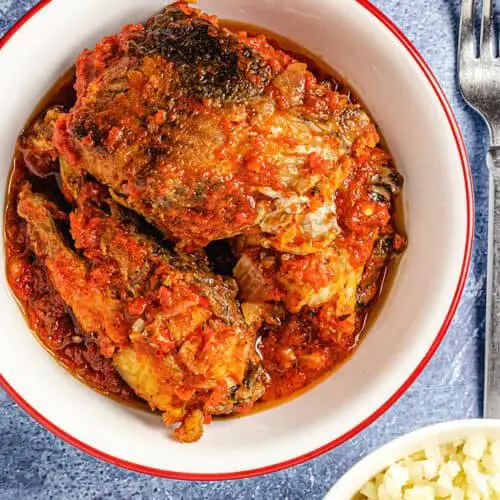



18 Interesting Facts about the Central African Republic

Unlocking the Mysteries of Central African Republic: 10 Surprising Facts and Laws”
Unique Legal System
Central African Republic has a legal system that incorporates customary law, French civil law, and Islamic law, making for a fascinating legal landscape.
Warthog Ivory Ban

The country implemented a ban on the trade of warthog ivory to protect these animals from poaching, showcasing its commitment to wildlife conservation.
Land of Pygmies
Central African Republic is home to several indigenous Pygmy groups, known for their unique culture, language, and traditional hunting and gathering practices.
Diamonds in the Rough

CAR boasts a wealth of diamond reserves. But the illegal diamond trade has fueled conflicts and instability, highlighting the challenges of resource management.
Home to a Singing River
Legend whispers of the Bouar River, where rapids supposedly create a hauntingly melodic sound. Scientific explanations abound, but the mystery persists.
Empire’s Legacy

Lobangu, once a bustling French colonial capital, is now a ghost town. Abandoned buildings stand as eerie testaments to the region’s colonial past
Economic Challenges
CAR faces economic challenges due to the extended political and social instability. It remains one of the poorest countries in both Africa and the world.
Emperor for a Day
In 1977, a 13-year-old boy, briefly crowned emperor, became the world’s youngest head of state (though his reign was short-lived).
Bokassa I

The country’s self-proclaimed emperor, Bokassa I, held an extravagant coronation ceremony rumored to have cost more than the nation’s annual budget.
Lingala Lingo
French is the official language, but Sangho, a lingua franca that emerged from trade routes, and regional languages like Lingala are widely spoken.
Archery Extravaganza
The annual archery festival of Peuhl nomads showcases their exceptional hunting skills and cultural traditions.
Invisible Children

Sadly, the CAR has faced the issue of child soldiery, with rebel groups recruiting children to fight in conflicts.
Bayanga’s Code of Silence
The Bayanga people have a unique tradition – a secret whistled language used for communication over long distances.
High Prevalence of Child Marriage

Despite efforts to combat it, child marriage remains prevalent in Central African Republic, with girls as young as 12 being married off.
Wildlife Paradise (Under Threat)
CAR boasts diverse wildlife, from roaming elephants to majestic gorillas. However, poaching and habitat loss pose a serious threat.
Religious Composition
CAR is predominantly Christian, with a large Catholic population.
Political Turmoil

The country has experienced political instability and conflict for decades, impacting its development and leaving many citizens vulnerable to poverty and violence.
Resilient Spirit
Despite its challenges, Central African Republic’s people are known for their resilience, kindness, and sense of community, making it a place of both struggle and hope.
The Central African Republic is a land of stark contrasts, captivating history, and resilience. These facts offer a glimpse into its complexities, inviting you to explore further and appreciate the unique tapestry that is the CAR.
The Central African Republic’s History and the Effect It Has Had on the Cuisine

The Central African Republic (CAR) boasts a cuisine as rich and diverse as its history. Let’s embark on a delicious expedition, exploring how each era has left its mark on the nation’s food culture.
Early Beginnings (8,000 Years Ago)
Our journey starts with the Aka (Pygmy) people, the earliest inhabitants who settled in CAR’s western and southern forests around 8,000 years ago.
Imagine a life deeply connected to the land, with skilled hunters gathering wild plants and using tools like polished flint and quartz (evidence found by diamond prospectors! [3]).
Megalithic Marvels (2,500 Years Ago)

Fast forward to 2,500 years ago, and we see evidence of local farmers who erected impressive megaliths.
Did these gatherings involve celebratory meals? Perhaps the seeds of CAR’s rich culinary traditions were sown then.
Indigenous Bounty
The foundation of CAR’s cuisine lies in its indigenous crops – millet, sorghum, bananas, yams, okra, and more. These, along with palm oil, form the base of many traditional dishes. Imagine meals brimming with fresh, locally sourced ingredients.
French Influences (Colonial Era)
The French left their mark not just on borders but also on CAR’s cuisine. French bread and wine became part of the culinary repertoire, offering a touch of European flair alongside traditional dishes.
Protein Powerhouses
Meat can be a rarity in CAR, but fish from the country’s rivers provides a vital source of protein. Insects like cicadas and grasshoppers, along with peanuts, were also traditionally consumed.
For those with access, chicken, goat, and wild game rounded out the protein options, especially during dry seasons.
Starchy Staples and Beyond
Fufu (pounded cassava) and foutou (mashed plantains or yams) are the stars of the show, serving as a base for stews, soups, and sauces. Palm oil adds a vibrant color and richness to many dishes.
Don’t forget the wild tubers, leaves, and mushrooms that contribute a unique touch to the cuisine.
Modern Flavors

Today, the capital city of Bangui offers a delightful mix of Western and traditional fare. Restaurants cater to diverse palates, while the PK5 area offers affordable and authentic local cuisine.
Imagine exploring bustling streets lined with vendors offering baked goods, fried bread (makara), and sizzling barbequed meats.
So, the next time you encounter Central African cuisine, remember – it’s a tapestry woven from thousands of years of history, a testament to the resourcefulness and adaptability of the people who call this land home.
References
- Cuisine of the Central African Republic – Wikipedia
- Central African Republic | Culture, History, & People | Britannica
- Central African Republic – Conflict, Colonialism, Independence
How the Central African Republic Climate and Geography has Influenced the Cuisine

The Central African Republic (CAR) is a landlocked nation nestled in the heart of Africa. Imagine a vast, landlocked country with a broad plateau at its center, giving way to scattered hills in the northeast and southwest.
This diverse terrain, coupled with a unique climate, plays a starring role in shaping CAR’s vibrant cuisine.
From Rainforests to Savannas: A Culinary Canvas
CAR boasts a stunning variety of vegetation zones. The southwest is a lush paradise, draped in a tropical rainforest teeming with life. In contrast, most areas are covered in wooded savannas, a mosaic of grasslands and scattered trees.
This variety translates directly to the country’s food culture.
Nature’s Bounty on Your Plate
The availability of natural resources dictates what ends up on the table. Staple foods like millet, rice, sesame, and sorghum are widely consumed. Indigenous crops like cassava, bananas, yams, and okra are culinary cornerstones.
Palm oil, with its vibrant color and rich flavor, adds a signature touch to many dishes. Wild greens, mushrooms, and tubers add a touch of the unexpected, reflecting the deep connection between the people and the land.
Fufu, a dish made from pounded cassava or plantains, serves as a comforting and versatile base for stews and soups. Protein comes from fish harvested from the country’s rivers, as well as chicken and goat meat.
A Culinary Journey Through the Regions
Travel across CAR, and your taste buds will embark on a delightful adventure. The rainforests of the southwest, blessed with abundant rainfall, offer a cornucopia of ingredients.
Here, dishes featuring wild game, leafy greens, and the unique flavors of forest fruits take center stage. Palm nut soup and cassava-based dishes are local favorites.
Adapting to the Land: The Northeast’s Delight

The harsh climate of the northeast presents a different culinary landscape. Limited rainfall restricts agricultural options, making millet and sorghum the dominant grains.
Dishes here are often simpler, focusing on readily available ingredients like dried fish and preserved meats.
Urban Flavors: A Blend of Tradition and Modernity
Cities like Bangui showcase the fascinating influence of French colonial history and global trade. Restaurants cater to diverse palates, offering both traditional dishes and Western-style fare.
Peanut soup, sizzling grilled meats, and crusty French baguettes all vie for your attention, creating a unique culinary fusion.
References
- Cuisine of the Central African Republic – Wikipedia
- Central African Republic Geography – CountryReports
Understanding the Essence of the Central African Republic ’s Cuisine
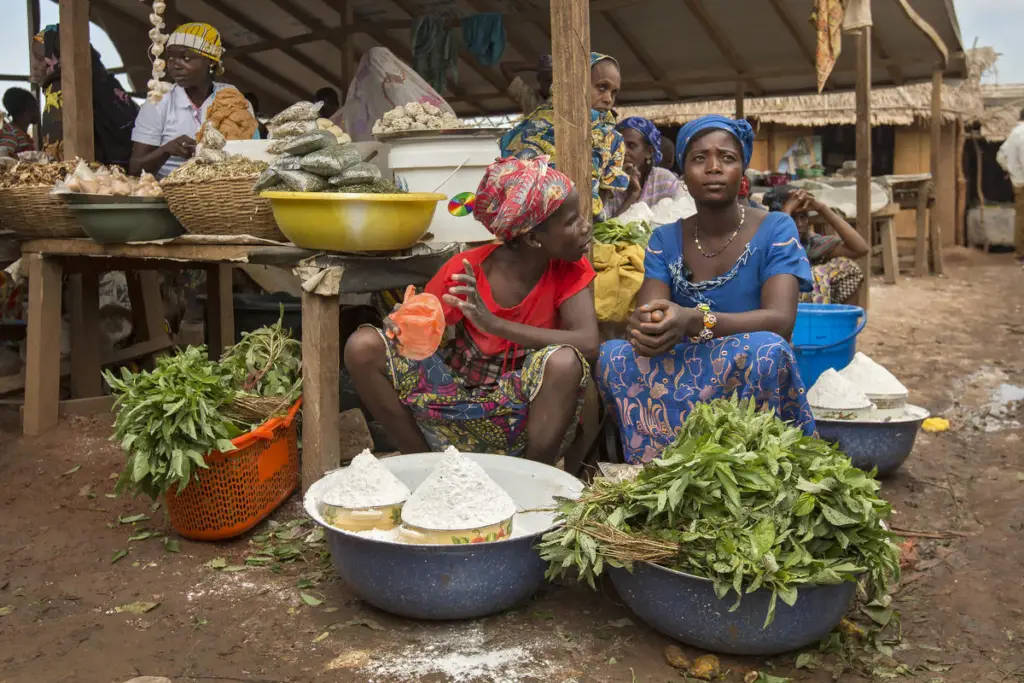
Central African Republic (CAR) cuisine isn’t just about sustenance; it’s a vibrant tapestry woven from history, geography, and the ingenuity of its people. But what truly sets it apart?
Let’s delve into the essence of CAR’s culinary identity and discover what makes it a symphony of unique flavors and unexpected delights.
Spice Up Your Life (But Not Overpower It)
Unlike its West African neighbors known for fiery heat, CAR’s cuisine strikes a beautiful balance. Spices like chili peppers add a gentle warmth, while aromatic herbs like ginger and garlic lend depth and complexity.
Think subtle smokiness from grilled meats, a hint of earthy zest from wild mushrooms, and the refreshing tang of local citrus fruits. It’s a symphony of flavors that dances on your palate without overwhelming it.
Sustainability on a Plate
Central Africans have a deep respect for their land, reflected in their culinary traditions. Every part of an ingredient is utilized – from cassava leaves in stews to wild tubers adding a unique texture to dishes.
This focus on sustainability not only minimizes waste but also connects the people to their environment. It’s a cuisine that celebrates resourcefulness and honors the bounty of nature.
A Celebration of the Unexpected
Forget the typical “meat and potatoes” fare. CAR cuisine thrives on the unexpected. Insects like cicadas and grasshoppers, once a staple protein source, are still enjoyed in some regions, offering a unique textural experience.
Palm oil, often demonized elsewhere, adds a vibrant color and richness to dishes. Adventurous eaters will be rewarded with a culinary journey unlike any other, discovering an exciting world of flavors that challenge expectations and tantalize the taste buds.
Beyond the Ingredients: A Culture of Sharing
Food in CAR is more than just sustenance; it’s a cornerstone of community. Meals are shared with loved ones, fostering a sense of togetherness and connection. Street vendors sizzle grilled meats, filling the air with enticing aromas, while families gather around steaming stews, sharing stories and laughter.
This communal spirit is a vital ingredient in the essence of CAR cuisine.
Exploring Central African Republic ’s Ingredients: The Flavors of Central African Republic’s Cuisine
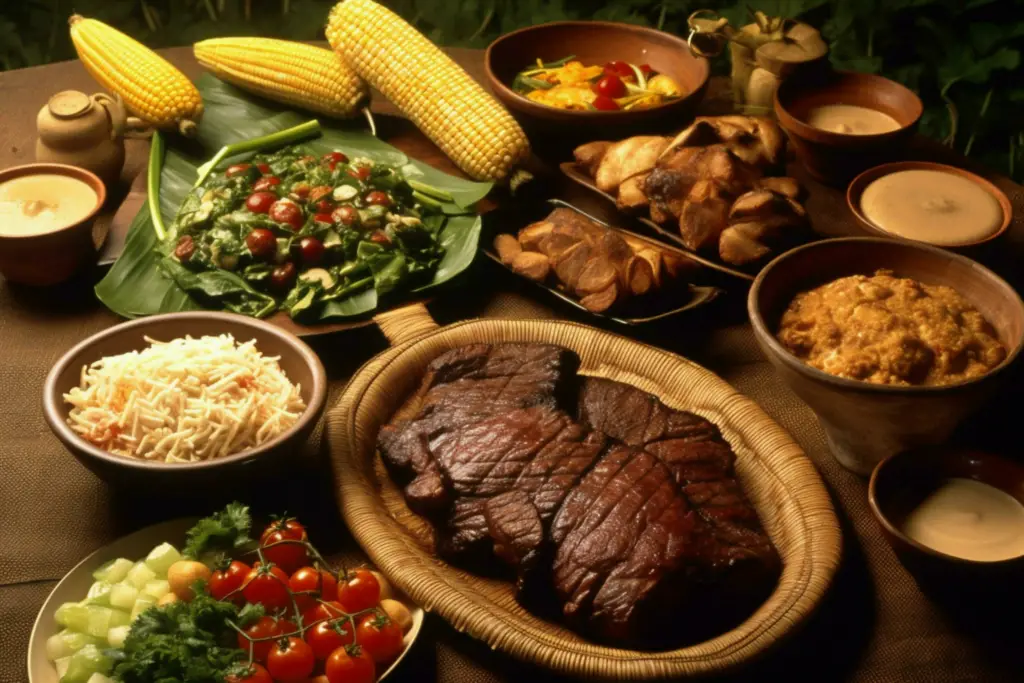
CAR’s culinary identity is a vibrant tapestry woven from the threads of geography, climate, and tradition. So, what are the key ingredients that form the foundation of this unique cuisine? Let’s embark on a delicious exploration and discover the building blocks that make CAR food so special.
Gifts from the Savanna
The vast savannas that blanket much of CAR offer a bounty of starchy staples that form the base of many meals. Millet and sorghum, ancient grains prized for their resilience in hot climates, are dietary cornerstones. These versatile grains are boiled, ground into flour, or fermented into beverages, offering a canvas for countless dishes.
Sesame seeds add a nutty richness and a touch of calcium, while peanuts, another savanna native, provide protein and healthy fats. Don’t forget onions, garlic, and chili peppers, ubiquitous ingredients that add depth and a touch of heat to stews and sauces.
Treasures of the Rainforest
Venture into the lush rainforests of the southwest, and a whole new world of ingredients unfolds. Cassava, a starchy root vegetable, reigns supreme. Pounded into a doughy fufu or grated for attieke (couscous-like dish), it serves as a versatile base for stews and soups.
Plantains and bananas add sweetness and carbohydrates, while okra brings a unique texture and a touch of mucilage to thicken stews. Palm oil, harvested from the rainforest’s bounty, adds a vibrant orange hue and a rich, nutty flavor that permeates many dishes.
Protein Powerhouses
While meat can be a luxury in some regions, CAR cuisine offers a variety of protein sources. Fish from the mighty Ubangi River and its tributaries are a staple, featuring prominently in stews and smoked preparations.
Chicken and goat are popular choices, especially during celebrations. In some areas, insects like crickets and grasshoppers, once a vital protein source, are still enjoyed for their unique taste and texture.
Nature’s Surprise Box
The resourceful people of CAR haven’t limited themselves to cultivated crops. Wild greens, mushrooms, and tubers add a touch of the unexpected and a celebration of the land’s natural bounty. Local citrus fruits, bursting with vitamin C, add a refreshing touch to stews and sauces.
This unique combination of ingredients – savanna staples, rainforest riches, protein powerhouses, and nature’s surprise box – forms the foundation of Central African Republic cuisine. Each region adds its own twist, incorporating local specialties and traditions.
The Central African Republic ’s National Food
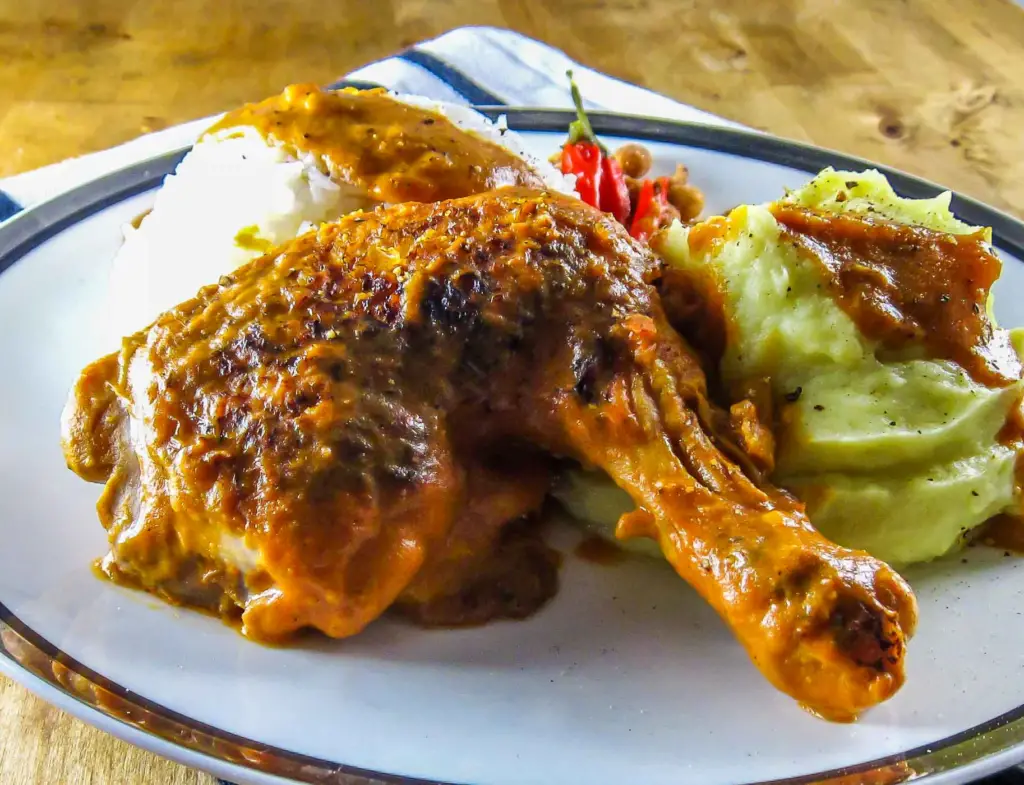
Central African Republic (CAR) boasts a vibrant tapestry of regional specialties, each reflecting the unique flavors and ingredients of its specific location. But when it comes to a national dish, things get a little intriguing. Unlike many countries with a single, well-defined national dish, CAR presents a bit of a mystery.
Poulet Moambé: A Strong Contender
The most frequently cited contender for the title of CAR’s national dish is Poulet Moambé. This delectable stew features tender chicken simmered in a rich, earthy sauce thickened with ground peanuts and palm oil.
The addition of spices like ginger, garlic, and chili peppers adds a touch of warmth and complexity, while vegetables like onions, tomatoes, and leafy greens round out the flavor profile. Poulet Moambé is a celebration of CAR’s culinary identity, showcasing the use of local ingredients and traditional cooking techniques.
A Dish Shared Across Borders
Here’s where the mystery deepens. Poulet Moambé isn’t exclusive to CAR. It’s a popular dish across Central Africa, with variations found in Gabon, Congo, and Equatorial Guinea.
This shared culinary heritage reflects the historical and cultural connections between these countries.
Beyond Poulet Moambé: A Celebration of Regional Delights
Perhaps the true essence of CAR cuisine lies not in a single national dish, but in the rich tapestry of regional specialties. From the hearty stews of the north featuring millet and sorghum to the vibrant, seafood-centric dishes of the riverine areas, each region offers a unique culinary experience.
Exploring the Delights of CAR
Here are some other regional gems to tantalize your taste buds:
- Sangha: A savory dish from the southwest, featuring fish cooked in palm oil with vegetables and spices.
- Kanda: A unique take on meatballs, popular in the central region, made with a blend of beef and roasted pumpkin seeds.
- Fufu: A staple across the country, this starchy dish made from pounded cassava or plantains serves as a base for many stews and soups.
The Takeaway: A Celebration of Diversity
So, while Poulet Moambé might be a strong contender, CAR’s culinary identity is perhaps best understood as a vibrant mosaic of regional specialties.
Exploring the Central African Republic ’s Street Food

The vibrant streets of the Central African Republic (CAR) aren’t just bustling with life; they’re a haven for adventurous foodies. Forget fancy restaurants – the heart of CAR’s culinary scene lies in its street food stalls, where sizzling aromas mingle with the sounds of daily life.
Let’s embark on a delicious expedition, exploring the unique street food scene of CAR and uncovering some of the must-try treats.
A Feast for the Senses
Imagine strolling through a bustling market, the air thick with the tantalizing aroma of spices and grilled meats. Colorful stalls overflow with steaming stews, golden fried snacks, and vibrant fresh fruits.
Street vendors, the culinary maestros of the scene, work their magic behind sizzling grills and bubbling pots, ready to satisfy your cravings.
5 Delectable Delights to Discover
- Brochettes: Skewers of marinated meat (chicken, goat, or beef) grilled to perfection, a smoky, savory treat on a stick.
- Makara: Deep-fried dough balls, sometimes filled with savory or sweet ingredients, a delightful grab-and-go snack.
- Soso: Freshly caught fish seasoned with aromatic spices and grilled to a delicate flakiness. Simplicity at its most delicious.
- Beignets: Deep-fried fritters, often filled with fruit or vegetables, a sweet and crispy indulgence.
- Grilled Plantains: Ripe plantains grilled over an open flame, caramelizing the sugars for a sweet and smoky flavor. A perfect end to your street food adventure.
City of Flavors: Bangui Takes the Crown
While street food is a national treasure in CAR, the capital city of Bangui boasts the most vibrant scene. Here, entire neighborhoods transform into open-air food courts, offering a dizzying array of choices.
From the bustling PK5 district to the central market, every corner beckons you to explore its culinary delights.
Beyond Bangui: Regional Gems Await
Don’t underestimate the street food scene in smaller towns and villages. While the variety may be slightly less, you’ll often find regional specialties not readily available in Bangui. Be sure to sample local variations on these popular dishes:
- Sangha à l’étouffée: A fish stew cooked in a sealed pot, popular in the southwest riverine regions.
- Kadogo: Deep-fried bean fritters, a protein-packed snack found across the country.
- Ngata: Skewered caterpillars, a delicacy enjoyed in some northern regions. (For the truly adventurous!)
The Most Popular Central African Republic Recipes

Fufu
A beloved staple made from boiled and pounded cassava or yams, served alongside hearty stews or soups for a comforting and filling meal.
Poulet Nyembwe
Tender chicken simmered in a rich and creamy sauce made from palm nut pulp, seasoned with garlic, onions, and aromatic spices for a dish bursting with flavor.
Saka-Saka
A traditional dish featuring cassava leaves cooked with palm oil, tomatoes, onions, and smoked fish or meat, creating a savory and nutritious stew.
Kanda
A flavorful dish made from tender pieces of beef or goat meat, simmered with tomatoes, onions, peppers, and peanut butter, resulting in a savory and satisfying meal.
Mbongo Tchobi
Slow-cooked beef or fish stew seasoned with Mbongo spice, a blend of roasted nuts, seeds, and spices, creating a rich and aromatic dish with a hint of smokiness.
Boule
A popular street food consisting of fried dough balls made from fermented cassava or maize flour, served with spicy sauces or savory dips for a tasty snack.
Brochettes
Skewered and grilled meat, often beef, goat, or chicken, marinated in a flavorful mixture of spices, garlic, and vinegar, resulting in tender and succulent kebabs.
Soso
A sweet and sticky dessert made from ground peanuts, sugar, and water, cooked until thickened and served in slices or cubes for a delightful treat.
Maboke
Fish or meat wrapped in banana leaves and steamed with onions, tomatoes, and spices, infusing the dish with a subtle earthy flavor and tender texture.
Gombo
A hearty okra stew cooked with meat, fish, or shrimp, seasoned with tomatoes, onions, and spices, creating a thick and savory dish often served with rice or fufu for a satisfying meal.
These iconic Central African Republic recipes showcase the country’s rich culinary heritage and offer a taste of the diverse and flavorful dishes enjoyed by its people.
How Healthy is The Central African Republic’s Food

The Central African Republic (CAR) faces a daunting challenge – a complex health crisis that demands immediate attention. Here’s a closer look at the key issues:
A Devastating Reality
The Central African Republic struggles with one of the world’s lowest human development indices . Imagine a country where basic necessities like healthcare are often out of reach, leading to a severe health emergency.
Violence, poor living conditions, and limited access to medical care create a perfect storm, threatening the well-being of millions.
Grim Statistics, Shocking Reality
A recent study in the Ouaka prefecture paints a grim picture. The crude mortality rate (deaths per 10,000 people per day) is a staggering 1.33, with a shocking 1.87 deaths for children under five.
The maternal mortality ratio, a stark indicator of a healthcare system under immense strain, sits at a heart-wrenching 2525 deaths per 100,000 live births. These numbers far exceed previous estimates and even surpass emergency thresholds, highlighting the urgent need for intervention.
Behind the Numbers: Common Culprits
Malaria, violence, diarrhea, respiratory infections – these are just some of the leading causes of death in CAR. Poor living conditions and limited access to healthcare exacerbate these issues, creating a vicious cycle of illness and mortality.
A Looming Shadow: Non-Communicable Diseases (NCDs)
Adding to the burden, non-communicable diseases (NCDs) like heart disease, stroke, and diabetes are on the rise in CAR. Poor diets, high blood pressure, and smoking are major risk factors, threatening to further strain an already struggling healthcare system.
Diabetes, in particular, is causing increased illness and disability, highlighting the crucial role of nutrition in preventing and managing these chronic conditions.
The Road to Recovery: A Collective Effort
The health disparities across CAR are immense, with many areas sharing similar challenges. Efforts towards achieving universal health coverage, ensuring everyone has access to essential healthcare services, are critical to improving health outcomes across the nation.
A Call to Action
The Central African Republic’s health crisis demands a multi-faceted approach. Urgent interventions are needed to address both communicable and non-communicable diseases, alongside improvements in infrastructure, sanitation, and access to basic healthcare services.
References
The Central African Republic ’s Cuisine Recipes to Try at Home

Ever craved a culinary adventure without leaving your doorstep? Look no further than the vibrant flavors of Central African Republic (CAR) cuisine! This often-underrated culinary gem boasts a unique blend of fresh ingredients, bold spices, and time-tested traditions, waiting to tantalize your taste buds.
More Than Just a Meal
CAR cuisine is more than just sustenance; it’s a tapestry woven from history, geography, and the resourcefulness of the people. From the earthy richness of peanut sauces to the vibrant heat of chilies, each dish tells a story about the land and its people.
Ready to Explore? We’ve Got You Covered!
This chapter is your gateway to experiencing CAR cuisine in the comfort of your own home. We’ve compiled a collection of delicious and easy-to-follow recipes, featuring staple ingredients readily available in most kitchens. So, fire up your stove, gather your loved ones, and prepare to be transported to the heart of Africa with these authentic and unforgettable flavors.
Central African Republic Food – Fufu

Exploring Central African Republic Cuisine: Fufu
Central African Republic, nestled in the heart of Africa, boasts a rich culinary tradition influenced by its diverse cultural heritage and abundant natural resources. Fufu, a beloved staple in Central African cuisine, has been enjoyed for generations as a comforting and filling dish.
Originating from the region’s indigenous communities, fufu embodies the essence of communal dining and celebrates the simplicity of traditional ingredients.
History and Background
Fufu holds a special place in Central African Republic’s culinary history, serving as a symbol of unity and tradition among its people. Originally crafted from locally grown cassava or yams, fufu was prepared by pounding the starchy root vegetables into a smooth, dough-like consistency.
Over time, fufu has become a staple in everyday meals and festive celebrations, reflecting the resilience and resourcefulness of Central African cooking.
Central African Republic Food – Fufu Ingredients
To prepare fufu, you will need:
- 2 pounds cassava roots or yams
- Water
- Salt (optional)
Central African Republic Food – Fufu Recipe
Preparing Ingredients
- Peel and Chop Cassava or Yams: Begin by peeling the cassava roots or yams, then chop them into smaller pieces for easier cooking.
- Boil the Cassava or Yams: Place the chopped cassava or yams in a large pot and cover them with water. Bring the water to a boil over medium-high heat and cook until the roots are fork-tender, usually about 20-30 minutes.
- Drain and Cool: Once the cassava or yams are cooked, drain them thoroughly and allow them to cool slightly before proceeding to the next step.
Making the Fufu
- Mash the Cooked Cassava or Yams: Transfer the cooked cassava or yams to a large bowl or mortar. Using a potato masher, wooden spoon, or traditional pestle, mash the roots until they form a smooth, cohesive dough.
- Knead the Dough: If the dough feels too dry, gradually add small amounts of water until you achieve the desired consistency. Knead the dough thoroughly to ensure it is smooth and free of lumps.
- Form into Balls or Loaves: With lightly oiled hands, shape the fufu dough into small balls or loaves, depending on your preference and serving size.
Serving
- Serve Warm: Fufu is traditionally served warm alongside flavorful stews, soups, or sauces. It acts as a perfect accompaniment, soaking up the delicious flavors of the main dish.
- Enjoy: Gather around the table with family and friends to enjoy the comforting taste of fufu, celebrating the rich culinary heritage of Central African Republic.
Serving Information
This fufu recipe serves 4-6 people.
Cooking Time
Preparation and cooking time: Approximately 45-60 minutes.
Nutritional Information
- Calories: Approximately 200 calories per serving (based on cassava)
- Carbohydrates: Approximately 50g
- Fiber: Approximately 3g
- Protein: Approximately 2g
- Fat: Approximately 0g
Indulge in the simplicity and comfort of fufu, a cherished dish that captures the essence of Central African Republic’s culinary tradition.
Central African Republic Food – Poulet Nyembwe

Exploring the Origins of Poulet Nyembwe
Poulet Nyembwe, a flavorful dish hailing from the Central African Republic, carries with it a rich history intertwined with the region’s culinary heritage. Rooted in Central African cuisine, this dish exemplifies the fusion of local ingredients and traditional cooking methods, reflecting the vibrant culture of the region.
Central African Republic Food – Poulet Nyembwe Ingredients:
- 1 whole chicken, cut into pieces
- 2 cups palm oil
- 2 onions, chopped
- 4 cloves garlic, minced
- 2 tomatoes, diced
- 2 bell peppers, sliced
- 2 hot peppers, chopped
- 1 cup peanut butter
- 2 cups chicken broth
- Salt and pepper to taste
Central African Republic Food – Poulet Nyembwe Recipe:
Preparing the Ingredients:
- Chop the Vegetables: Begin by chopping the onions, garlic, tomatoes, bell peppers, and hot peppers. Set them aside separately.
- Cut the Chicken: Cut the whole chicken into pieces, ensuring they are cleaned and trimmed of excess fat.
Cooking the Poulet Nyembwe:
- Heat the Palm Oil: In a large pot over medium heat, warm the palm oil until it shimmers.
- Sauté the Aromatics: Add the chopped onions and minced garlic to the pot, sautéing until they turn translucent and fragrant.
- Brown the Chicken: Place the chicken pieces into the pot, browning them on all sides to seal in the juices and enhance the flavor.
- Incorporate the Vegetables: Stir in the chopped tomatoes, bell peppers, and hot peppers, allowing them to cook down and meld with the other ingredients.
- Add Peanut Butter: Spoon the peanut butter into the pot, stirring until it is fully incorporated and forms a thick, creamy sauce.
- Pour in Chicken Broth: Gradually pour in the chicken broth, stirring to combine all the flavors and create a luscious sauce.
- Simmer to Perfection: Reduce the heat to low and let the dish simmer gently, allowing the flavors to meld together and the chicken to cook through. This usually takes about 30-40 minutes, or until the chicken is tender and cooked to perfection.
- Season to Taste: Taste the Poulet Nyembwe and adjust the seasoning with salt and pepper according to your preference.
Serving:
- Serve the Poulet Nyembwe hot, accompanied by steamed rice or traditional Central African side dishes.
- Garnish with chopped fresh herbs for an added burst of flavor and color.
Serving Size:
- This recipe serves approximately 4-6 people.
Estimated Cooking Time:
- Total cooking time: 1 hour (including preparation and cooking)
Nutritional Information:
- Calories: Approximately 400 calories per serving
- Fat: 28g
- Protein: 24g
- Carbohydrates: 15g
- Fiber: 3g
- Sugar: 6g
Enjoy this delightful taste of Central African cuisine with Poulet Nyembwe, a dish that embodies the warmth and richness of the region’s culinary tradition!
Central African Republic Food – Poulet Moambé

Uncovering the Roots of Poulet Moambé
Poulet Moambé, a beloved dish from the Central African Republic, invites diners to savor the flavors of a rich culinary history. Originating from the heart of Africa, this dish reflects the diverse cultural influences and traditional cooking techniques of the region.
Central African Republic Food – Poulet Moambé Ingredients:
- 1 whole chicken, cut into pieces
- 2 cups Moambé sauce (made from fermented palm nuts)
- 2 onions, finely chopped
- 3 cloves garlic, minced
- 2 tomatoes, diced
- 2 bell peppers, sliced
- 2 hot peppers, chopped
- 1 cup peanut butter
- 2 cups chicken broth
- Salt and pepper to taste
Central African Republic Food – Poulet Moambé Recipe:
Preparing the Ingredients:
- Prep the Chicken: Cut the whole chicken into pieces and clean them thoroughly. Pat them dry with paper towels and set aside.
- Chop the Aromatics: Finely chop the onions, mince the garlic, and dice the tomatoes. Slice the bell peppers and chop the hot peppers. Keep them separated.
Cooking the Poulet Moambé:
- Sear the Chicken: In a large pot over medium heat, add a splash of oil. Brown the chicken pieces on all sides until they develop a golden crust. Remove and set aside.
- Sauté the Aromatics: In the same pot, sauté the chopped onions and minced garlic until they turn soft and fragrant.
- Incorporate the Vegetables: Add the diced tomatoes, sliced bell peppers, and chopped hot peppers to the pot. Cook until the vegetables are tender.
- Blend in the Moambé Sauce: Pour in the Moambé sauce, stirring to combine all the ingredients. Let it simmer for a few minutes to allow the flavors to meld.
- Add Peanut Butter: Stir in the peanut butter until it’s fully incorporated into the sauce, creating a creamy texture.
- Pour in Chicken Broth: Gradually pour in the chicken broth, stirring continuously to ensure everything is well combined. This will help to thin out the sauce and add depth to the flavor.
- Return the Chicken: Place the seared chicken pieces back into the pot, nestling them into the sauce.
- Simmer to Perfection: Reduce the heat to low and let the dish simmer gently, allowing the chicken to cook through and absorb the flavors of the sauce. This usually takes about 30-40 minutes.
- Season to Taste: Taste the Poulet Moambé and adjust the seasoning with salt and pepper according to your preference.
Serving:
- Serve the Poulet Moambé hot, accompanied by steamed rice or traditional Central African side dishes.
- Garnish with chopped fresh herbs for an added burst of flavor and color.
Serving Size:
- This recipe serves approximately 4-6 people.
Estimated Cooking Time:
- Total cooking time: 1 hour (including preparation and cooking)
Nutritional Information:
- Calories: Approximately 450 calories per serving
- Fat: 30g
- Protein: 25g
- Carbohydrates: 18g
- Fiber: 4g
- Sugar: 7g
Delight in the robust flavors of Central African cuisine with Poulet Moambé, a dish that embodies the essence of the region’s culinary tradition!
Central African Republic Food – Saka-Saka

Discovering the Origins of Saka-Saka
Saka-Saka, a traditional dish originating from the Central African Republic, offers a glimpse into the culinary heritage of the region. With roots deeply embedded in Central African cuisine, Saka-Saka showcases the local ingredients and cooking techniques cherished by generations.
Central African Republic Food – Saka-Saka Ingredients:
- 2 bunches cassava leaves
- 1 onion, finely chopped
- 3 cloves garlic, minced
- 2 tomatoes, diced
- 2 cups peanut butter
- 2 cups chicken or vegetable broth
- 1 cup water
- Salt and pepper to taste
Central African Republic Food – Saka-Saka Recipe:
Preparing the Ingredients:
- Prep the Cassava Leaves: Wash the cassava leaves thoroughly and remove any tough stems. Chop them finely and set aside.
- Chop the Aromatics: Finely chop the onion, mince the garlic, and dice the tomatoes. Keep them separated.
Cooking the Saka-Saka:
- Sauté the Aromatics: In a large pot over medium heat, sauté the chopped onion and minced garlic until they turn soft and fragrant.
- Add Tomatoes: Stir in the diced tomatoes and cook until they begin to soften.
- Incorporate Cassava Leaves: Add the chopped cassava leaves to the pot, stirring to combine with the aromatics.
- Blend in Peanut Butter: Spoon the peanut butter into the pot, stirring until it melts and coats the leaves evenly.
- Pour in Broth and Water: Gradually pour in the chicken or vegetable broth and water, stirring to create a smooth sauce.
- Simmer to Perfection: Reduce the heat to low and let the Saka-Saka simmer gently, allowing the flavors to meld together. Stir occasionally to prevent sticking.
- Season to Taste: Taste the Saka-Saka and adjust the seasoning with salt and pepper according to your preference.
Serving:
- Serve the Saka-Saka hot, accompanied by steamed rice or traditional Central African side dishes.
- Garnish with chopped peanuts or fresh herbs for an added burst of flavor and texture.
Serving Size:
- This recipe serves approximately 4-6 people.
Estimated Cooking Time:
- Total cooking time: 45 minutes (including preparation and cooking)
Nutritional Information:
- Calories: Approximately 350 calories per serving
- Fat: 25g
- Protein: 15g
- Carbohydrates: 20g
- Fiber: 6g
- Sugar: 5g
Indulge in the wholesome flavors of Central African cuisine with Saka-Saka, a dish that embodies the essence of comfort and tradition!
Central African Republic Food – Kanda

Exploring the Heritage of Kanda
Kanda, a flavorful dish from the Central African Republic, holds a special place in the culinary landscape of the region. Originating from the heart of Central Africa, Kanda showcases a blend of local ingredients and traditional cooking methods, reflecting the vibrant cultural heritage of the area.
Central African Republic Food – Kanda Ingredients:
- 1 lb beef, cut into cubes
- 1 cup dried fish, deboned and shredded
- 2 cups pumpkin leaves, chopped (substitute spinach if unavailable)
- 2 onions, finely chopped
- 3 cloves garlic, minced
- 2 tomatoes, diced
- 2 tablespoons tomato paste
- 2 cups water
- Salt and pepper to taste
- Palm oil for cooking
Central African Republic Food – Kanda Recipe:
Preparing the Ingredients:
- Prep the Beef: Cut the beef into bite-sized cubes and set aside.
- Prepare the Dried Fish: Debone and shred the dried fish into small pieces.
- Chop the Vegetables: Finely chop the onions, mince the garlic, dice the tomatoes, and chop the pumpkin leaves.
Cooking the Kanda:
- Sauté the Aromatics: In a large pot over medium heat, heat some palm oil. Add the chopped onions and minced garlic, sautéing until they turn golden brown and fragrant.
- Cook the Beef: Add the beef cubes to the pot and cook until they are browned on all sides.
- Incorporate Tomatoes and Tomato Paste: Stir in the diced tomatoes and tomato paste, cooking until the tomatoes break down and the paste is well distributed.
- Add Dried Fish: Mix in the shredded dried fish, allowing it to impart its flavor into the dish.
- Pour in Water: Gradually pour in the water, stirring to create a flavorful broth.
- Simmer to Perfection: Reduce the heat to low and let the Kanda simmer gently, allowing the flavors to meld together. This usually takes about 45 minutes to 1 hour, or until the beef is tender.
- Add Pumpkin Leaves: Stir in the chopped pumpkin leaves (or spinach) and continue to simmer until they are wilted and cooked through.
- Season to Taste: Taste the Kanda and adjust the seasoning with salt and pepper according to your preference.
Serving:
- Serve the Kanda hot, accompanied by steamed rice or traditional Central African side dishes.
- Drizzle some palm oil on top for an authentic touch.
Serving Size:
- This recipe serves approximately 4-6 people.
Estimated Cooking Time:
- Total cooking time: 1 hour 15 minutes (including preparation and cooking)
Nutritional Information:
- Calories: Approximately 300 calories per serving
- Fat: 15g
- Protein: 25g
- Carbohydrates: 15g
- Fiber: 3g
- Sugar: 5g
Savor the robust flavors of Central African cuisine with Kanda, a dish that embodies the warmth and richness of the region’s culinary tradition!
Central African Republic Food – Mbongo Tchobi

Uncovering the Roots of Mbongo Tchobi
Mbongo Tchobi, a cherished dish from the Central African Republic, offers a glimpse into the culinary heritage of the region. Originating from Central Africa, Mbongo Tchobi reflects the diverse cultural influences and traditional cooking techniques passed down through generations.
Central African Republic Food – Mbongo Tchobi Ingredients:
- 2 lbs beef, cut into chunks
- 2 cups Mbongo spice mix (a blend of spices including ground Mbongo seeds, dried shrimp, and other herbs)
- 2 onions, finely chopped
- 3 cloves garlic, minced
- 2 tomatoes, diced
- 2 tablespoons tomato paste
- 2 cups water
- Salt and pepper to taste
- Palm oil for cooking
Central African Republic Food – Mbongo Tchobi Recipe:
Preparing the Ingredients:
- Prep the Beef: Cut the beef into large chunks and set aside.
- Chop the Aromatics: Finely chop the onions, mince the garlic, and dice the tomatoes.
Cooking the Mbongo Tchobi:
- Marinate the Beef: In a bowl, coat the beef chunks with the Mbongo spice mix, ensuring they are evenly covered. Let it marinate for at least 30 minutes, or overnight for richer flavor.
- Sauté the Aromatics: In a large pot over medium heat, heat some palm oil. Add the chopped onions and minced garlic, sautéing until they turn soft and golden brown.
- Add Tomatoes and Tomato Paste: Stir in the diced tomatoes and tomato paste, cooking until the tomatoes break down and the paste is well incorporated.
- Brown the Beef: Add the marinated beef chunks to the pot, browning them on all sides to seal in the flavor.
- Pour in Water: Gradually pour in the water, stirring to create a rich sauce. Bring the mixture to a gentle simmer.
- Simmer to Perfection: Reduce the heat to low and let the Mbongo Tchobi simmer gently, allowing the flavors to meld together. Cover and cook for about 1.5 to 2 hours, or until the beef is tender and the sauce has thickened.
- Season to Taste: Taste the Mbongo Tchobi and adjust the seasoning with salt and pepper according to your preference.
Serving:
- Serve the Mbongo Tchobi hot, accompanied by steamed rice or traditional Central African side dishes.
- Garnish with chopped fresh herbs for an extra burst of flavor.
Serving Size:
- This recipe serves approximately 4-6 people.
Estimated Cooking Time:
- Total cooking time: 2 hours 30 minutes (including preparation and cooking)
Nutritional Information:
- Calories: Approximately 400 calories per serving
- Fat: 25g
- Protein: 30g
- Carbohydrates: 10g
- Fiber: 2g
- Sugar: 3g
Indulge in the bold and aromatic flavors of Central African cuisine with Mbongo Tchobi, a dish that captures the essence of tradition and culinary expertise!
Central African Republic Food – Brochettes

Exploring the Heritage of Brochettes
Brochettes, a popular dish from the Central African Republic, showcase the region’s vibrant culinary culture. Originating from Central Africa, Brochettes reflect the tradition of skewered and grilled meats enjoyed by communities across the region for centuries.
Central African Republic Food – Brochettes Ingredients:
- 1 lb beef or chicken, cut into cubes
- 2 onions, diced
- 2 bell peppers, diced
- 2 tablespoons vegetable oil
- 2 tablespoons soy sauce
- 2 cloves garlic, minced
- 1 teaspoon paprika
- Salt and pepper to taste
- Wooden skewers, soaked in water
Central African Republic Food – Brochettes Recipe:
Preparing the Ingredients:
- Cut Meat: If using beef or chicken, cut it into cubes of roughly equal size and set aside.
- Chop Vegetables: Dice the onions and bell peppers into chunks suitable for skewering.
- Marinate: In a bowl, combine the vegetable oil, soy sauce, minced garlic, paprika, salt, and pepper. Add the meat cubes to the marinade, ensuring they are well coated. Let them marinate for at least 30 minutes to allow the flavors to meld.
Cooking the Brochettes:
- Preheat Grill: Preheat your grill to medium-high heat.
- Skewer Ingredients: Thread the marinated meat cubes onto the soaked wooden skewers, alternating with pieces of diced onion and bell pepper.
- Grill: Place the skewers on the preheated grill and cook for about 8-10 minutes on each side, or until the meat is cooked through and has developed a charred exterior.
- Baste: Occasionally baste the Brochettes with any remaining marinade during cooking to keep them moist and flavorful.
- Serve: Once cooked to your desired doneness, remove the Brochettes from the grill and serve hot.
Serving:
- Serve the Brochettes hot off the grill, accompanied by your favorite side dishes such as rice, vegetables, or a fresh salad.
- Garnish with chopped herbs or a squeeze of lemon for added flavor.
Serving Size:
- This recipe serves approximately 4 people.
Estimated Cooking Time:
- Total cooking time: 20-25 minutes (including preparation and grilling)
Nutritional Information:
- Calories: Approximately 250 calories per serving (based on beef)
- Fat: 15g
- Protein: 20g
- Carbohydrates: 8g
- Fiber: 2g
- Sugar: 4g
Enjoy the smoky aroma and succulent taste of Central African cuisine with Brochettes, a dish that brings people together to celebrate the joys of outdoor cooking!
Central African Republic Food – Maboké de Capitaine

Unveiling the Roots of Maboke
Maboke, a cherished dish from the Central African Republic, offers a delicious glimpse into the region’s culinary heritage. Originating from Central Africa, Maboke embodies the simplicity and richness of traditional cooking methods passed down through generations in the region’s lush forests and vibrant communities.
Central African Republic Food – Maboké de Capitaine Ingredients:
- 1 whole fish (such as tilapia or catfish), cleaned and scaled
- 2 onions, thinly sliced
- 2 tomatoes, thinly sliced
- 2 bell peppers, thinly sliced
- 2 hot peppers, thinly sliced
- 1 cup palm oil
- 1 tablespoon tomato paste
- Salt and pepper to taste
- Banana leaves or aluminum foil
Central African Republic Food – Maboké de Capitaine Recipe:
Preparing the Ingredients:
- Clean and Scale Fish: Ensure the fish is properly cleaned and scaled, removing any innards and rinsing it thoroughly under cold water. Pat it dry with paper towels.
- Slice Vegetables: Thinly slice the onions, tomatoes, bell peppers, and hot peppers, keeping them separated.
Cooking the Maboke:
- Preheat Oven or Grill: Preheat your oven to 375°F (190°C) or prepare a grill for indirect cooking.
- Season Fish: Season the fish generously with salt and pepper, both inside and out.
- Assemble Maboke: Lay out a large piece of banana leaf or aluminum foil. Place half of the sliced vegetables on the bottom, followed by the seasoned fish, and then the remaining vegetables on top. Drizzle with palm oil and tomato paste.
- Wrap and Seal: Fold the banana leaf or aluminum foil over the fish and vegetables to create a packet, ensuring it is tightly sealed to trap in the flavors.
- Cook Maboke: Place the Maboke packet in the preheated oven or on the grill and cook for 30-40 minutes, or until the fish is cooked through and the vegetables are tender.
- Serve: Carefully unwrap the Maboke packet and transfer the fish and vegetables to a serving platter. Serve hot, accompanied by steamed rice or fufu.
Serving:
- Serve the Maboke hot, allowing diners to unwrap the fragrant packet themselves and enjoy the succulent fish and tender vegetables.
- Garnish with fresh herbs or a squeeze of lemon for added brightness.
Serving Size:
- This recipe serves approximately 2-4 people, depending on the size of the fish.
Estimated Cooking Time:
- Total cooking time: 45-50 minutes (including preparation and cooking)
Nutritional Information:
- Calories: Approximately 300 calories per serving (varies based on fish size)
- Fat: 20g
- Protein: 25g
- Carbohydrates: 10g
- Fiber: 3g
- Sugar: 5g
Experience the tantalizing flavors of Central African cuisine with Maboke, a dish that captures the essence of traditional cooking methods and fresh, wholesome ingredients!
Central African Republic Food – Gombo

Discovering the Origins of Gombo
Gombo, a cherished dish from the Central African Republic, offers a tantalizing taste of the region’s rich culinary heritage. Originating from Central Africa, Gombo reflects the diverse cultural influences and traditional cooking techniques passed down through generations in the heart of the continent.
Central African Republic Food – Gombo Ingredients:
- 1 lb okra, sliced
- 1 lb meat (chicken, beef, or goat), cut into chunks
- 2 onions, chopped
- 3 tomatoes, diced
- 2 bell peppers, sliced
- 2 hot peppers, chopped
- 2 tablespoons palm oil
- 2 tablespoons peanut butter
- 4 cups chicken or vegetable broth
- Salt and pepper to taste
Central African Republic Food – Gombo Recipe:
Preparing the Ingredients:
- Slice Okra: Wash the okra thoroughly and slice it into rounds. Set aside.
- Prepare Meat: Cut the meat of your choice into bite-sized chunks and set aside.
- Chop Vegetables: Chop the onions, dice the tomatoes, slice the bell peppers, and chop the hot peppers. Keep them separated.
Cooking the Gombo:
- Sauté Onions: In a large pot over medium heat, heat the palm oil. Add the chopped onions and sauté until they turn translucent and fragrant.
- Brown Meat: Add the meat chunks to the pot and brown them on all sides, ensuring they develop a golden crust.
- Incorporate Vegetables: Stir in the diced tomatoes, sliced bell peppers, and chopped hot peppers. Cook until the vegetables begin to soften.
- Add Okra: Add the sliced okra to the pot, stirring to combine with the other ingredients.
- Blend in Peanut Butter: Spoon the peanut butter into the pot, stirring until it’s fully incorporated and forms a thick sauce.
- Pour in Broth: Gradually pour in the chicken or vegetable broth, stirring continuously to create a flavorful base for the Gombo.
- Simmer to Perfection: Reduce the heat to low and let the Gombo simmer gently, allowing the flavors to meld together. Cover and cook for about 30-40 minutes, or until the okra is tender and the meat is cooked through.
- Season to Taste: Taste the Gombo and adjust the seasoning with salt and pepper according to your preference.
Serving:
- Serve the Gombo hot, accompanied by steamed rice or fufu for a traditional Central African meal.
- Garnish with chopped fresh herbs for an added burst of flavor.
Serving Size:
- This recipe serves approximately 4-6 people.
Estimated Cooking Time:
- Total cooking time: 1 hour (including preparation and cooking)
Nutritional Information:
- Calories: Approximately 300 calories per serving
- Fat: 15g
- Protein: 20g
- Carbohydrates: 25g
- Fiber: 6g
- Sugar: 8g
Delight in the vibrant flavors of Central African cuisine with Gombo, a dish that embodies the warmth and richness of the region’s culinary tradition!
Central African Republic Food – Sangha à l’étouffée (A fish stew)

Unveiling the Roots of Sangha à l’étouffée
Sangha à l’étouffée, a delightful fish stew from the Central African Republic, invites you to savor the flavors of the region’s bountiful rivers and lakes. Originating from Central Africa, Sangha à l’étouffée reflects the tradition of using fresh, locally sourced ingredients to create hearty and comforting dishes enjoyed by communities along the Sangha River and beyond.
Central African Republic Food – Sangha à l’étouffée Ingredients:
- 2 lbs fish fillets (such as tilapia or catfish), cut into chunks
- 2 onions, finely chopped
- 3 tomatoes, diced
- 2 bell peppers, sliced
- 2 hot peppers, chopped
- 3 cloves garlic, minced
- 2 tablespoons tomato paste
- 2 cups fish or vegetable broth
- 2 tablespoons palm oil
- Salt and pepper to taste
Central African Republic Food – Sangha à l’étouffée Recipe:
Preparing the Ingredients:
- Prepare Fish: Rinse the fish fillets under cold water and pat them dry with paper towels. Cut them into bite-sized chunks and set aside.
- Chop Aromatics: Finely chop the onions, dice the tomatoes, slice the bell peppers, and mince the garlic. Keep them separated.
Cooking the Sangha à l’étouffée:
- Sauté Aromatics: In a large pot over medium heat, heat the palm oil. Add the chopped onions and minced garlic, sautéing until they turn soft and translucent.
- Add Tomatoes and Peppers: Stir in the diced tomatoes and sliced bell peppers, cooking until they begin to soften.
- Incorporate Hot Peppers: Add the chopped hot peppers to the pot, adjusting the amount according to your desired level of spiciness.
- Stew Base: Spoon in the tomato paste, stirring to combine with the vegetables and create a rich base for the stew.
- Add Fish: Carefully add the fish chunks to the pot, arranging them in an even layer over the vegetables.
- Pour in Broth: Gradually pour in the fish or vegetable broth, ensuring it covers the fish and vegetables. Bring the mixture to a gentle simmer.
- Simmer to Perfection: Reduce the heat to low and let the Sangha à l’étouffée simmer gently, allowing the flavors to meld together. Cover and cook for about 20-25 minutes, or until the fish is cooked through and flakes easily with a fork.
- Season to Taste: Taste the stew and adjust the seasoning with salt and pepper according to your preference.
Serving:
- Serve the Sangha à l’étouffée hot, accompanied by steamed rice or crusty bread to soak up the flavorful broth.
- Garnish with chopped fresh herbs for a burst of color and freshness.
Serving Size:
- This recipe serves approximately 4-6 people.
Estimated Cooking Time:
- Total cooking time: 45 minutes (including preparation and cooking)
Nutritional Information:
- Calories: Approximately 250 calories per serving
- Fat: 10g
- Protein: 30g
- Carbohydrates: 10g
- Fiber: 2g
- Sugar: 5g
Experience the authentic flavors of Central African cuisine with Sangha à l’étouffée, a dish that celebrates the abundance of the region’s waterways and the warmth of communal dining!
Central African Republic Food – Kadogo (Deep-fried bean fritters)

Exploring the Culinary Heritage of Kadogo
Kadogo, a beloved dish from the Central African Republic, offers a delicious taste of the region’s rich culinary traditions. Originating from Central Africa, Kadogo reflects the creativity and resourcefulness of local cooks who transform simple ingredients into flavorful delights. This dish is a popular street food enjoyed by people of all ages throughout the region.
Central African Republic Food – Kadogo Ingredients:
- 2 cups black-eyed peas, soaked overnight
- 1 onion, finely chopped
- 2 cloves garlic, minced
- 1 tablespoon ground crayfish (or substitute shrimp paste)
- 1 teaspoon ground cayenne pepper
- Salt to taste
- Vegetable oil for frying
Central African Republic Food – Kadogo Recipe:
Preparing the Ingredients:
- Soak Black-Eyed Peas: Place the black-eyed peas in a bowl and cover them with water. Allow them to soak overnight to soften.
- Chop Aromatics: Finely chop the onion and mince the garlic. Set them aside.
Making Kadogo:
- Drain and Rinse Peas: Drain the soaked black-eyed peas and rinse them under cold water to remove any excess starch.
- Blend Peas: In a blender or food processor, blend the black-eyed peas until they form a coarse paste. Add a little water if necessary to achieve the right consistency.
- Season Mixture: Transfer the blended peas to a mixing bowl. Add the chopped onion, minced garlic, ground crayfish, cayenne pepper, and salt to taste. Mix well to combine all the ingredients evenly.
- Form Fritters: Heat vegetable oil in a deep fryer or large pot to 350°F (180°C). Using a spoon or your hands, scoop up small portions of the pea mixture and shape them into balls or patties.
- Fry Kadogo: Carefully drop the formed fritters into the hot oil, working in batches to avoid overcrowding the fryer. Fry until golden brown and crispy, about 5-7 minutes per batch.
- Drain and Serve: Once cooked, remove the Kadogo from the oil using a slotted spoon and drain them on paper towels to remove excess oil.
Serving:
- Serve the Kadogo hot and crispy as a delicious snack or appetizer.
- Enjoy them on their own or with your favorite dipping sauce for added flavor.
Serving Size:
- This recipe serves approximately 4-6 people.
Estimated Cooking Time:
- Total cooking time: 20-25 minutes (including preparation and frying)
Nutritional Information:
- Calories: Approximately 150 calories per serving (4-6 Kadogo)
- Fat: 8g
- Protein: 6g
- Carbohydrates: 15g
- Fiber: 3g
- Sugar: 2g
Indulge in the crispy goodness of Kadogo, a delightful Central African treat that’s perfect for sharing with friends and family!
Central African Republic Food – Ngata (Skewered caterpillars)

Uncovering the Heritage of Ngata
Ngata, a unique delicacy from the Central African Republic, offers a taste of the region’s culinary diversity. Originating from Central Africa, Ngata reflects the resourcefulness of local communities who have long relied on the abundant natural resources of the region’s forests for sustenance.
While perhaps unconventional to some, Ngata is a cherished traditional dish enjoyed by many in Central Africa.
Central African Republic Food – Ngata Ingredients:
- Fresh caterpillars (such as the caterpillars of the Gonimbrasia belina moth)
- Salt to taste
- Lemon wedges (optional, for serving)
Central African Republic Food – Ngata Recipe:
Preparing the Ingredients:
- Clean the Caterpillars: Rinse the fresh caterpillars under cold water to remove any debris or dirt. Pat them dry with paper towels.
- Skewer the Caterpillars: Carefully skewer the caterpillars onto wooden or metal skewers, piercing them through the center lengthwise. Pack them tightly to ensure they don’t fall off during cooking.
Cooking Ngata:
- Grill or Roast: Preheat a grill or oven to medium-high heat. If using a grill, lightly oil the grates to prevent sticking.
- Season: Sprinkle the skewered caterpillars with salt, seasoning them to taste.
- Cook: Place the skewers on the grill or in the oven, cooking for approximately 5-7 minutes per side, or until the caterpillars are cooked through and lightly charred.
- Serve: Once cooked, remove the skewers from the heat and transfer the Ngata to a serving platter. Serve hot, accompanied by lemon wedges if desired.
Serving:
- Serve Ngata hot off the grill or oven as a unique and adventurous appetizer or snack.
- Squeeze fresh lemon juice over the cooked caterpillars for a burst of citrus flavor, if desired.
Serving Size:
- This recipe serves approximately 2-4 people, depending on the quantity of caterpillars available.
Estimated Cooking Time:
- Total cooking time: 15-20 minutes (including preparation and cooking)
Nutritional Information:
- Calories: Approximately 50 calories per serving (varies based on caterpillar size)
- Fat: 2g
- Protein: 6g
- Carbohydrates: 1g
- Fiber: 0g
- Sugar: 0g
Experience the intriguing flavors of Central African cuisine with Ngata, a dish that pushes culinary boundaries and invites you to embrace new culinary experiences!
Central African Republic Food – Makara (Deep-fried dough balls)

Unveiling the Heritage of Makara
Makara presents a delightful culinary tradition from the Central African Republic, showcasing the region’s penchant for simple yet satisfying treats. Originating from Central Africa, Makara represents the ingenuity of local cooks who transform basic ingredients into delicious fried snacks.
This beloved dish has been enjoyed for generations in Central African households and is often served during special occasions and festive gatherings.
Central African Republic Food – Makara Ingredients:
- 2 cups all-purpose flour
- 1 teaspoon baking powder
- 1/4 teaspoon salt
- 2 tablespoons sugar
- 1 cup water or milk
- Vegetable oil for frying
- Powdered sugar or cinnamon sugar (optional, for dusting)
Central African Republic Food – Makara Recipe:
Preparing the Ingredients:
- Combine Dry Ingredients: In a mixing bowl, whisk together the all-purpose flour, baking powder, salt, and sugar until well combined.
- Add Liquid: Gradually pour in the water or milk, stirring continuously, until a smooth batter forms. The consistency should be thick but pourable.
Making Makara:
- Heat Oil: Fill a deep pot or skillet with vegetable oil to a depth of about 2 inches. Heat the oil over medium-high heat until it reaches 350°F (180°C).
- Form Dough Balls: Using a spoon or your hands, scoop up small portions of the batter and shape them into round dough balls, about 1-2 inches in diameter.
- Fry Makara: Carefully drop the dough balls into the hot oil, working in batches to avoid overcrowding the pot. Fry until golden brown and crispy, about 3-5 minutes per batch, turning occasionally for even cooking.
- Drain and Dust: Once cooked, remove the Makara from the oil using a slotted spoon and drain them on paper towels to remove excess oil. If desired, dust the warm Makara with powdered sugar or cinnamon sugar for added sweetness.
Serving:
- Serve Makara warm as a delightful snack or dessert, perfect for sharing with friends and family.
- Enjoy them on their own or dip them in your favorite sauce or jam for extra flavor.
Serving Size:
- This recipe serves approximately 4-6 people.
Estimated Cooking Time:
- Total cooking time: 20-25 minutes (including preparation and frying)
Nutritional Information:
- Calories: Approximately 150 calories per serving (4-6 Makara)
- Fat: 6g
- Protein: 2g
- Carbohydrates: 20g
- Fiber: 1g
- Sugar: 3g
Indulge in the crispy and delicious goodness of Makara, a classic Central African treat that’s sure to delight taste buds of all ages!
Central African Republic Food – Beignets (Deep-fried fritters, often filled with fruit or vegetables)

Exploring the Culinary Landscape of Beignets
Beignets offer a delectable glimpse into the culinary traditions of the Central African Republic. Originating from Central Africa, Beignets are beloved deep-fried fritters that showcase the region’s love for indulgent treats. These delightful snacks are often enjoyed as street food or homemade delights during festive occasions and family gatherings.
Central African Republic Food – Beignets Ingredients:
- 2 cups all-purpose flour
- 1 tablespoon baking powder
- 1/4 teaspoon salt
- 2 tablespoons sugar
- 1 egg
- 3/4 cup milk
- 2 tablespoons melted butter or vegetable oil
- Oil for frying
- Fillings of your choice (such as diced fruit, vegetables, or chocolate chips)
- Powdered sugar for dusting (optional)
Central African Republic Food – Beignets Recipe:
Preparing the Ingredients:
- Combine Dry Ingredients: In a mixing bowl, whisk together the all-purpose flour, baking powder, salt, and sugar until well combined.
- Mix Wet Ingredients: In a separate bowl, beat the egg lightly, then add the milk and melted butter or vegetable oil. Mix until smooth.
- Combine Wet and Dry Ingredients: Pour the wet ingredients into the dry ingredients and stir until just combined. Be careful not to overmix; a few lumps are okay.
Making Beignets:
- Heat Oil: Fill a deep pot or skillet with oil to a depth of about 2 inches. Heat the oil to 375°F (190°C) over medium-high heat.
- Form Fritters: Drop spoonfuls of the batter into the hot oil, using a spoon or scoop. You can also use your hands to shape the batter into balls.
- Add Fillings: If desired, place a small amount of your chosen filling (such as diced fruit, vegetables, or chocolate chips) in the center of each fritter before frying.
- Fry Beignets: Carefully place the fritters into the hot oil, working in batches to avoid overcrowding. Fry until golden brown and puffed, about 2-3 minutes per side.
- Drain and Dust: Once cooked, remove the Beignets from the oil using a slotted spoon and drain them on paper towels. If desired, dust with powdered sugar while still warm.
Serving:
- Serve Beignets warm as a delightful snack or dessert, perfect for any occasion.
- Enjoy them plain or filled with your favorite fruits, vegetables, or sweet treats for a personalized touch.
Serving Size:
- This recipe serves approximately 4-6 people, depending on portion size.
Estimated Cooking Time:
- Total cooking time: 20-25 minutes (including preparation and frying)
Nutritional Information:
- Calories: Approximately 150 calories per serving (2 Beignets without filling)
- Fat: 6g
- Protein: 3g
- Carbohydrates: 20g
- Fiber: 1g
- Sugar: 5g
Indulge in the irresistible delight of Beignets, a cherished Central African treat that promises to satisfy your sweet cravings with every bite!
Central African Republic Food – Grilled Plantains (Ripe plantains grilled over an open flame)

Exploring the Culinary Delights of Grilled Plantains
Grilled plantains offer a tantalizing taste of the Central African Republic’s vibrant culinary scene. Originating from Central Africa, grilled plantains are a beloved dish that showcases the region’s love for simple yet flavorful ingredients. Often enjoyed as a side dish or snack, grilled plantains are a staple in Central African cuisine, adding a touch of sweetness to any meal.
Central African Republic Food – Grilled Plantains Ingredients:
- Ripe plantains
- Olive oil or melted butter (optional)
- Salt (optional)
- Honey or cinnamon (optional, for serving)
Central African Republic Food – Grilled Plantains Recipe:
Preparing the Ingredients:
- Select Ripe Plantains: Choose ripe plantains with yellow skins that are slightly soft to the touch. Avoid green plantains, as they are not yet ripe enough for grilling.
- Peel Plantains: Use a knife to make a shallow slit along the length of each plantain. Peel off the skin and discard it.
Grilling the Plantains:
- Preheat Grill: Preheat an outdoor grill or stovetop grill pan to medium-high heat.
- Slice Plantains: Cut the peeled plantains into diagonal slices, about 1/2 inch thick.
- Brush with Oil (Optional): Brush the plantain slices lightly with olive oil or melted butter, if desired, to prevent sticking and add extra flavor.
- Grill Plantains: Place the plantain slices directly onto the grill grates or grill pan. Grill for 2-3 minutes per side, or until grill marks form and the plantains are caramelized and tender.
- Season (Optional): Sprinkle the grilled plantains with a pinch of salt if you prefer a savory flavor profile.
- Serve: Remove the grilled plantains from the grill and transfer them to a serving platter. Serve hot, drizzled with honey or sprinkled with cinnamon for a touch of sweetness, if desired.
Serving Size:
- This recipe serves approximately 2-4 people, depending on the number of plantains used.
Estimated Cooking Time:
- Total cooking time: 10-15 minutes (including preparation and grilling)
Nutritional Information:
- Calories: Approximately 100 calories per serving (1 medium plantain)
- Fat: 0g
- Protein: 1g
- Carbohydrates: 27g
- Fiber: 2g
- Sugar: 14g
Savor the delightful flavors of grilled plantains, a quintessential dish of Central African cuisine that’s perfect for adding a touch of sweetness to any meal or gathering!
Central African Republic Food – Cassava and cassava greens

Exploring Central African Cuisine: Cassava and Cassava Greens
Central African cuisine is a vibrant fusion of flavors influenced by the diverse cultures and abundant natural resources of the region. One staple that stands out is cassava, a versatile root vegetable that forms the basis of many dishes.
Cassava greens, the leaves of the cassava plant, are also commonly used, adding a unique taste and texture to traditional recipes. Let’s delve into the culinary delights of the Central African Republic with this hearty and nutritious dish.
Central African Republic Food – Cassava and cassava greens Ingredients:
- 2 lbs cassava root, peeled and diced
- 1 bunch cassava greens, washed and chopped
- 1 onion, finely chopped
- 2 tomatoes, diced
- 3 cloves garlic, minced
- 1 hot pepper, diced (optional)
- 1 cup peanut butter
- 2 cups vegetable broth
- Salt and pepper to taste
- Oil for cooking
Central African Republic Food – Cassava and cassava greens Recipe:
Preparing Ingredients:
- Peel and Dice Cassava Root: Start by peeling the tough outer skin of the cassava root using a sharp knife. Then, dice the cassava into bite-sized pieces.
- Wash and Chop Cassava Greens: Thoroughly wash the cassava greens to remove any dirt or debris. Chop them into smaller pieces, discarding any tough stems.
Cooking Instructions:
- Sauté Onion and Garlic: Heat oil in a large pot over medium heat. Add the chopped onion and minced garlic, sautéing until they turn golden brown and fragrant.
- Add Tomatoes and Hot Pepper (Optional): Stir in the diced tomatoes and hot pepper, if using. Cook for a few minutes until the tomatoes soften.
- Add Cassava Root: Toss in the diced cassava root, stirring well to combine with the onion, garlic, and tomatoes.
- Pour Vegetable Broth: Pour the vegetable broth into the pot, ensuring that the cassava root is submerged. Bring the mixture to a gentle boil.
- Simmer Until Cassava is Tender: Reduce the heat to low and let the cassava simmer until it becomes tender, about 20-30 minutes. Stir occasionally to prevent sticking.
- Add Cassava Greens: Once the cassava root is almost tender, add the chopped cassava greens to the pot. Cook for an additional 10-15 minutes until the greens are wilted and tender.
- Incorporate Peanut Butter: Gradually stir in the peanut butter, allowing it to melt and blend into the stew. Continue cooking for a few more minutes until the stew reaches your desired consistency.
- Season to Taste: Taste the stew and adjust the seasoning with salt and pepper as needed. Serve hot.
Serving: This recipe serves 4-6 people.
Estimated Cooking Time: Approximately 45-60 minutes.
Nutritional Information: (Per Serving)
- Calories: 320
- Total Fat: 18g
- Saturated Fat: 3g
- Sodium: 650mg
- Total Carbohydrates: 35g
- Dietary Fiber: 6g
- Sugars: 5g
- Protein: 10g
Enjoy the rich flavors and nourishing goodness of this traditional Central African dish, perfect for sharing with family and friends!
Central African Republic Food – Igisafuliya

Discovering Central African Delicacy: Igisafuliya
Central African cuisine is a tapestry of diverse flavors woven together by the rich culinary heritage of the region. Igisafuliya, a traditional dish hailing from the Central African Republic, is a hearty and savory meal that embodies the essence of local ingredients and cooking techniques. Let’s delve into the origins and preparation of this delightful dish.
Central African Republic Food – Igisafuliya Ingredients:
- 2 cups cornmeal
- 1 cup ground peanuts
- 1 onion, finely chopped
- 2 tomatoes, diced
- 3 cloves garlic, minced
- 1 hot pepper, diced (optional)
- 2 cups water
- Salt to taste
- Oil for cooking
Central African Republic Food – Igisafuliya Recipe:
Preparing Ingredients:
- Chop Onion, Tomatoes, and Hot Pepper: Begin by finely chopping the onion, dicing the tomatoes, and mincing the garlic. If using, dice the hot pepper as well.
- Grind Peanuts: Grind the peanuts into a coarse powder using a food processor or mortar and pestle. Set aside.
- Mix Cornmeal: In a bowl, combine the cornmeal with water to form a smooth, thick paste. Set aside.
Cooking Instructions:
- Sauté Aromatics: Heat oil in a large skillet over medium heat. Add the chopped onion and minced garlic, sautéing until they turn translucent and fragrant.
- Add Tomatoes and Hot Pepper (Optional): Stir in the diced tomatoes and hot pepper, if using. Cook for a few minutes until the tomatoes soften and release their juices.
- Incorporate Ground Peanuts: Add the ground peanuts to the skillet, stirring well to combine with the onion, garlic, and tomatoes. Cook for an additional 2-3 minutes to toast the peanuts slightly.
- Pour Cornmeal Mixture: Carefully pour the cornmeal mixture into the skillet, stirring continuously to prevent lumps from forming.
- Simmer Until Thickened: Reduce the heat to low and let the mixture simmer, stirring occasionally, until it thickens to a porridge-like consistency, about 15-20 minutes.
- Season to Taste: Taste the igisafuliya and season with salt as needed, adjusting to your preference.
- Serve Hot: Once the igisafuliya reaches the desired consistency, remove it from the heat and serve hot.
Serving: This recipe serves 4-6 people.
Estimated Cooking Time: Approximately 30 minutes.
Nutritional Information: (Per Serving)
- Calories: 280
- Total Fat: 15g
- Saturated Fat: 2g
- Sodium: 150mg
- Total Carbohydrates: 30g
- Dietary Fiber: 5g
- Sugars: 5g
- Protein: 10g
Experience the comforting flavors and nourishing goodness of igisafuliya, a beloved dish from the heart of Central Africa. Perfect for sharing with loved ones or savoring as a comforting meal on a chilly evening.
Central African Republic Food – Shrimp with Boiled Sweet Potato

Exploring Central African Cuisine: Shrimp with Boiled Sweet Potato
Central African cuisine is a delightful blend of indigenous flavors and influences from neighboring regions, resulting in dishes that are both comforting and exotic. Shrimp with boiled sweet potato is a popular dish in the Central African Republic, showcasing the region’s abundance of fresh seafood and hearty root vegetables. Let’s dive into the history and preparation of this flavorful dish.
Central African Republic Food – Shrimp with Boiled Sweet Potato Ingredients:
- 1 lb shrimp, peeled and deveined
- 2 large sweet potatoes, peeled and cubed
- 1 onion, finely chopped
- 2 tomatoes, diced
- 3 cloves garlic, minced
- 1 hot pepper, diced (optional)
- 1 tablespoon tomato paste
- 2 cups water or seafood broth
- Salt and pepper to taste
- Oil for cooking
Central African Republic Food – Shrimp with Boiled Sweet Potato Recipe:
Preparing Ingredients:
- Peel and Cube Sweet Potatoes: Begin by peeling the sweet potatoes and cutting them into bite-sized cubes. Set aside.
- Prepare Shrimp: Peel and devein the shrimp, rinsing them under cold water. Pat dry with paper towels and set aside.
- Chop Onion, Tomatoes, and Hot Pepper: Finely chop the onion, dice the tomatoes, and mince the garlic. If using, dice the hot pepper as well.
Cooking Instructions:
- Sauté Aromatics: Heat oil in a large skillet over medium heat. Add the chopped onion and minced garlic, sautéing until they become soft and fragrant.
- Add Tomatoes and Hot Pepper (Optional): Stir in the diced tomatoes and hot pepper, if using. Cook for a few minutes until the tomatoes start to break down.
- Incorporate Tomato Paste: Add the tomato paste to the skillet, stirring well to combine with the onion, garlic, and tomatoes. Cook for an additional 2-3 minutes to deepen the flavor.
- Add Shrimp: Carefully add the peeled and deveined shrimp to the skillet, arranging them in a single layer. Cook for 2-3 minutes on each side until they turn pink and opaque.
- Boil Sweet Potatoes: In a separate pot, bring water or seafood broth to a boil. Add the cubed sweet potatoes and cook until they are tender but still hold their shape, about 10-15 minutes.
- Combine Ingredients: Once the shrimp are cooked through and the sweet potatoes are tender, carefully add the sweet potatoes to the skillet with the shrimp and aromatic sauce. Gently toss to combine.
- Season to Taste: Taste the dish and season with salt and pepper as needed, adjusting to your preference.
- Serve Hot: Remove the skillet from the heat and serve the shrimp with boiled sweet potatoes hot, garnished with fresh herbs if desired.
Serving: This recipe serves 3-4 people.
Estimated Cooking Time: Approximately 30 minutes.
Nutritional Information: (Per Serving)
- Calories: 280
- Total Fat: 5g
- Saturated Fat: 1g
- Cholesterol: 120mg
- Sodium: 450mg
- Total Carbohydrates: 35g
- Dietary Fiber: 5g
- Sugars: 8g
- Protein: 25g
Indulge in the succulent flavors of shrimp paired with the natural sweetness of boiled sweet potatoes, a delightful taste of Central African culinary tradition. Perfect for a cozy dinner at home or a gathering with friends and family.
Central African Republic Food – Muamba De Galinha

Exploring Central African Cuisine: Muamba De Galinha
Central African cuisine is a vibrant tapestry of flavors reflecting the rich cultural heritage and diverse landscapes of the region. Muamba de galinha, a traditional dish from the Central African Republic, is a tantalizing chicken stew simmered in a flavorful sauce made from palm oil and aromatic spices. Let’s delve into the origins and preparation of this beloved dish.
Central African Republic Food – Muamba De Galinha Ingredients:
- 1 whole chicken, cut into pieces
- 2 onions, finely chopped
- 3 tomatoes, diced
- 3 cloves garlic, minced
- 1 hot pepper, diced
- 1 cup palm oil
- 1 cup okra, sliced
- 1 cup water or chicken broth
- 2 tablespoons tomato paste
- 1 tablespoon ground crayfish (optional)
- Salt and pepper to taste
- Fresh cilantro for garnish
Central African Republic Food – Muamba De Galinha Recipe:
Preparing Ingredients:
- Prepare Chicken: Rinse the whole chicken under cold water and pat dry with paper towels. Cut the chicken into pieces, separating the legs, thighs, wings, and breast. Set aside.
- Chop Onion, Tomatoes, Garlic, and Hot Pepper: Finely chop the onions, dice the tomatoes, mince the garlic, and dice the hot pepper. Keep them separate.
Cooking Instructions:
Sauté Aromatics
Heat palm oil in a large pot over medium heat. Add the chopped onions and minced garlic, sautéing until they become soft and translucent.
Add Tomatoes and Hot Pepper
Stir in the diced tomatoes and hot pepper, cooking until the tomatoes start to break down and release their juices.
Incorporate Tomato Paste and Crayfish (Optional)
Add the tomato paste and ground crayfish to the pot, stirring well to combine with the onions, garlic, tomatoes, and hot pepper. Cook for an additional 2-3 minutes to deepen the flavor.
Brown Chicken
Carefully add the chicken pieces to the pot, arranging them in a single layer. Allow the chicken to brown on all sides, turning occasionally to ensure even cooking.
Add Water or Chicken Broth
Pour water or chicken broth into the pot, ensuring that the chicken is submerged. Bring the liquid to a gentle boil, then reduce the heat to low and cover the pot.
Simmer Until Chicken is Tender
Let the chicken simmer in the sauce for about 30-40 minutes, or until it is cooked through and tender.
Add Okra
Once the chicken is almost done, add the sliced okra to the pot, stirring gently to incorporate it into the sauce. Cook for an additional 10-15 minutes until the okra is tender.
Season to Taste
Taste the muamba de galinha and season with salt and pepper as needed, adjusting to your preference.
Serve Hot
Remove the pot from the heat and serve the muamba de galinha hot, garnished with fresh cilantro.
Serving: This recipe serves 4-6 people.
Estimated Cooking Time: Approximately 60 minutes.
Nutritional Information: (Per Serving)
- Calories: 380
- Total Fat: 25g
- Saturated Fat: 7g
- Cholesterol: 95mg
- Sodium: 450mg
- Total Carbohydrates: 10g
- Dietary Fiber: 3g
- Sugars: 5g
- Protein: 30g
Indulge in the comforting flavors of muamba de galinha, a taste of Central African culinary tradition that will warm your soul and tantalize your taste buds. Perfect for sharing with loved ones or enjoying as a comforting meal on a chilly evening.
Central African Republic Food – Spinach Stew

Exploring Central African Cuisine: Spinach Stew
History and Background:
Spinach stew is a traditional dish deeply rooted in the culinary traditions of the Central African Republic. This vibrant and flavorful stew showcases the abundance of fresh produce in the region, with spinach taking center stage as the star ingredient. Spinach stew has been enjoyed by generations of Central Africans, offering a nutritious and comforting meal that celebrates the rich heritage of the region.
Central African Republic Food – Spinach Stew Ingredients:
- 2 lbs fresh spinach leaves
- 1 onion, finely chopped
- 2 tomatoes, diced
- 3 cloves garlic, minced
- 1 hot pepper, diced (optional)
- 1 cup peanut butter
- 2 cups vegetable broth
- Salt and pepper to taste
- Oil for cooking
Central African Republic Food – Spinach Stew Recipe:
Preparing Ingredients:
- Clean and Prepare Spinach: Wash the fresh spinach leaves thoroughly under cold water to remove any dirt or debris. Remove any tough stems and chop the spinach into smaller pieces.
- Chop Onion, Tomatoes, Garlic, and Hot Pepper: Finely chop the onion, dice the tomatoes, mince the garlic, and dice the hot pepper if using.
Cooking Instructions:
Sauté Aromatics
Heat oil in a large pot over medium heat. Add the chopped onion and minced garlic, sautéing until they become soft and fragrant.
Add Tomatoes and Hot Pepper (Optional)
Stir in the diced tomatoes and hot pepper, cooking until the tomatoes start to break down and release their juices.
Incorporate Spinach
Add the chopped spinach to the pot, stirring well to combine with the onion, garlic, tomatoes, and hot pepper. Cook for a few minutes until the spinach wilts down.
Mix in Peanut Butter
Gradually stir in the peanut butter, allowing it to melt and blend into the stew.
Pour Vegetable Broth
Pour the vegetable broth into the pot, stirring to combine with the other ingredients. Bring the stew to a gentle simmer.
Simmer Until Thickened
Reduce the heat to low and let the stew simmer for about 15-20 minutes, allowing the flavors to meld together and the stew to thicken.
Season to Taste
Taste the stew and season with salt and pepper as needed, adjusting to your preference.
Serve Hot
Remove the pot from the heat and serve the spinach stew hot, accompanied by rice, fufu, or your favorite grain.
Serving: This recipe serves 4-6 people.
Estimated Cooking Time: Approximately 30 minutes.
Nutritional Information: (Per Serving)
- Calories: 220
- Total Fat: 15g
- Saturated Fat: 3g
- Cholesterol: 0mg
- Sodium: 350mg
- Total Carbohydrates: 15g
- Dietary Fiber: 5g
- Sugars: 5g
- Protein: 10g
Indulge in the rich flavors and nutritious goodness of spinach stew, a beloved dish from the heart of the Central African Republic. Perfect for sharing with family and friends or enjoying as a satisfying meal on a chilly evening.
Central African Republic Food – Palm Nut Soup

Exploring Central African Cuisine: Palm Nut Soup
History and Background:
Palm nut soup, also known as “Mbanga Soup,” is a cherished dish originating from the Central African Republic. This flavorful soup has been a staple in Central African cuisine for centuries, with its roots deeply intertwined with the region’s abundant palm trees.
Palm nut soup is a testament to the resourcefulness of Central African cooks, who ingeniously extract rich, creamy broth from palm nuts to create a hearty and satisfying dish that reflects the diverse flavors of the region.
Central African Republic Food – Palm Nut Soup Ingredients:
- 2 cups palm nuts, shelled and processed
- 1 onion, finely chopped
- 2 tomatoes, diced
- 3 cloves garlic, minced
- 1 hot pepper, diced (optional)
- 1 cup cooked meat or fish (chicken, beef, or fish)
- 2 cups vegetable or chicken broth
- Salt and pepper to taste
- Oil for cooking
Central African Republic Food – Palm Nut Soup Recipe:
Preparing Ingredients:
Process Palm Nuts
Shell the palm nuts and process them to extract the creamy pulp. You can use a food processor or mortar and pestle for this step.
Chop Onion, Tomatoes, Garlic, and Hot Pepper
Finely chop the onion, dice the tomatoes, mince the garlic, and dice the hot pepper if using.
Cook Meat or Fish
If using raw meat or fish, cook it beforehand and set it aside. Chicken, beef, or fish are commonly used in palm nut soup.
Cooking Instructions:
Sauté Aromatics
Heat oil in a large pot over medium heat. Add the chopped onion and minced garlic, sautéing until they become soft and translucent.
Add Tomatoes and Hot Pepper (Optional)
Stir in the diced tomatoes and hot pepper, cooking until the tomatoes start to break down and release their juices.
Incorporate Palm Nut Pulp
Add the processed palm nut pulp to the pot, stirring well to combine with the aromatics. Cook for a few minutes to allow the flavors to meld together.
Pour Broth
Pour vegetable or chicken broth into the pot, stirring to combine with the palm nut mixture. Bring the soup to a gentle simmer.
Add Cooked Meat or Fish
Once the soup is simmering, add the cooked meat or fish to the pot, stirring to distribute evenly.
Simmer Until Thickened
Let the soup simmer for about 20-30 minutes, allowing it to thicken and the flavors to develop.
Season to Taste
Taste the soup and season with salt and pepper as needed, adjusting to your preference.
Serve Hot
Remove the pot from the heat and serve the palm nut soup hot, accompanied by rice, fufu, or your favorite grain.
Serving: This recipe serves 4-6 people.
Estimated Cooking Time: Approximately 45 minutes.
Nutritional Information: (Per Serving)
- Calories: 280
- Total Fat: 20g
- Saturated Fat: 5g
- Cholesterol: 30mg
- Sodium: 450mg
- Total Carbohydrates: 15g
- Dietary Fiber: 3g
- Sugars: 5g
- Protein: 15g
Indulge in the rich and creamy flavors of palm nut soup, a cherished dish from the heart of the Central African Republic. Perfect for warming up on a chilly day or enjoying as a comforting meal with loved ones.
Central African Republic Food – Yams

Exploring Central African Cuisine: Yams
History and Background:
Yams are an essential part of Central African cuisine, deeply ingrained in the culinary traditions of the region. Originating from Africa, yams have been cultivated for thousands of years and hold significant cultural and symbolic importance.
In the Central African Republic, yams are not only a staple food source but also play a vital role in rituals, celebrations, and traditional medicine. Known for their versatility and hearty texture, yams are celebrated in a variety of dishes, showcasing the rich flavors and cultural heritage of the region.
Central African Republic Food – Yams Ingredients:
- 4 large yams
- Salt to taste
- Water for boiling
Central African Republic Food – Yams Recipe:
Preparing Ingredients:
- Peel and Rinse Yams: Start by peeling the yams using a vegetable peeler or knife. Rinse them under cold water to remove any dirt or debris.
- Cut Yams: Cut the yams into evenly sized chunks or cubes for more even cooking.
Cooking Instructions:
- Boil Yams: Place the yam chunks in a large pot and cover them with water. Add a pinch of salt to the water to enhance the flavor. Bring the water to a boil over medium-high heat.
- Simmer Until Tender: Once the water reaches a boil, reduce the heat to medium-low and let the yams simmer until they are fork-tender, about 15-20 minutes.
- Drain and Serve: Once the yams are cooked through, drain them and transfer them to a serving dish. Serve hot as a side dish or incorporate them into your favorite recipes.
Serving: This recipe serves 4-6 people.
Estimated Cooking Time: Approximately 20-25 minutes.
Nutritional Information: (Per Serving)
- Calories: 150
- Total Fat: 0g
- Saturated Fat: 0g
- Cholesterol: 0mg
- Sodium: 10mg
- Total Carbohydrates: 35g
- Dietary Fiber: 5g
- Sugars: 0g
- Protein: 2g
Enjoy the simple yet satisfying flavors of yams, a staple ingredient in Central African cuisine that adds warmth and comfort to any meal. Whether boiled, roasted, or mashed, yams are sure to delight your taste buds and nourish your body.
Conclusion
Central African Republic cuisine is a captivating story whispered by the wind, sung by the rivers, and nurtured by the fertile earth. It’s a testament to the resourcefulness and adaptability of the people who call this landlocked nation home. From the fiery stews of the north to the vibrant, fish-centric dishes of the river regions, each region offers a unique chapter waiting to be savored.
FAQ’s
8 Frequently Asked Questions
What are the staple foods in Central African Republic cuisine?
Central African Republic cuisine revolves around staple foods such as cassava, yams, plantains, and rice. These versatile ingredients form the basis of many dishes and are often served alongside flavorful stews, soups, or grilled meats.
Is Central African Republic cuisine spicy?
Yes, Central African Republic cuisine can be spicy, with many dishes incorporating hot peppers and aromatic spices to add depth and flavor. However, the level of spiciness can vary depending on personal preference and regional influences.
What are some popular traditional dishes in Central African Republic?
Some popular traditional dishes in Central African Republic include fufu, a pounded cassava or yam dish served with stews; poulet nyembwe, chicken cooked in a rich palm nut sauce; and saka-saka, a savory stew made with cassava leaves and palm oil.
Are there any vegetarian options in Central African Republic cuisine?
Yes, Central African Republic cuisine offers several vegetarian options, particularly dishes made with vegetables, legumes, and grains. Some vegetarian-friendly dishes include peanut stew, grilled plantains, and bean-based soups.
What are some common ingredients used in Central African Republic cuisine?
Common ingredients in Central African Republic cuisine include palm oil, peanuts, cassava, yams, plantains, tomatoes, onions, garlic, hot peppers, and various spices and herbs. These ingredients are used to create flavorful and aromatic dishes that are both nutritious and satisfying.
How is food typically served in Central African Republic?
Food in Central African Republic is often served family-style, with large communal dishes placed in the center of the table for everyone to share. Meals are typically accompanied by staples like rice, fufu, or couscous, along with a variety of side dishes and condiments.
Is Central African Republic cuisine influenced by other cultures?
Yes, Central African Republic cuisine has been influenced by various cultures over the years, including French colonial, Arabic, and indigenous African influences. These influences have contributed to the diverse flavors and ingredients found in traditional Central African dishes.
Are there any street foods or snacks popular in Central African Republic?
Yes, street foods and snacks are popular in Central African Republic, with options ranging from fried dough balls known as boule to grilled meat skewers called brochettes. Other popular snacks include roasted peanuts, fried plantains, and sweet treats like soso, a peanut-based dessert.

